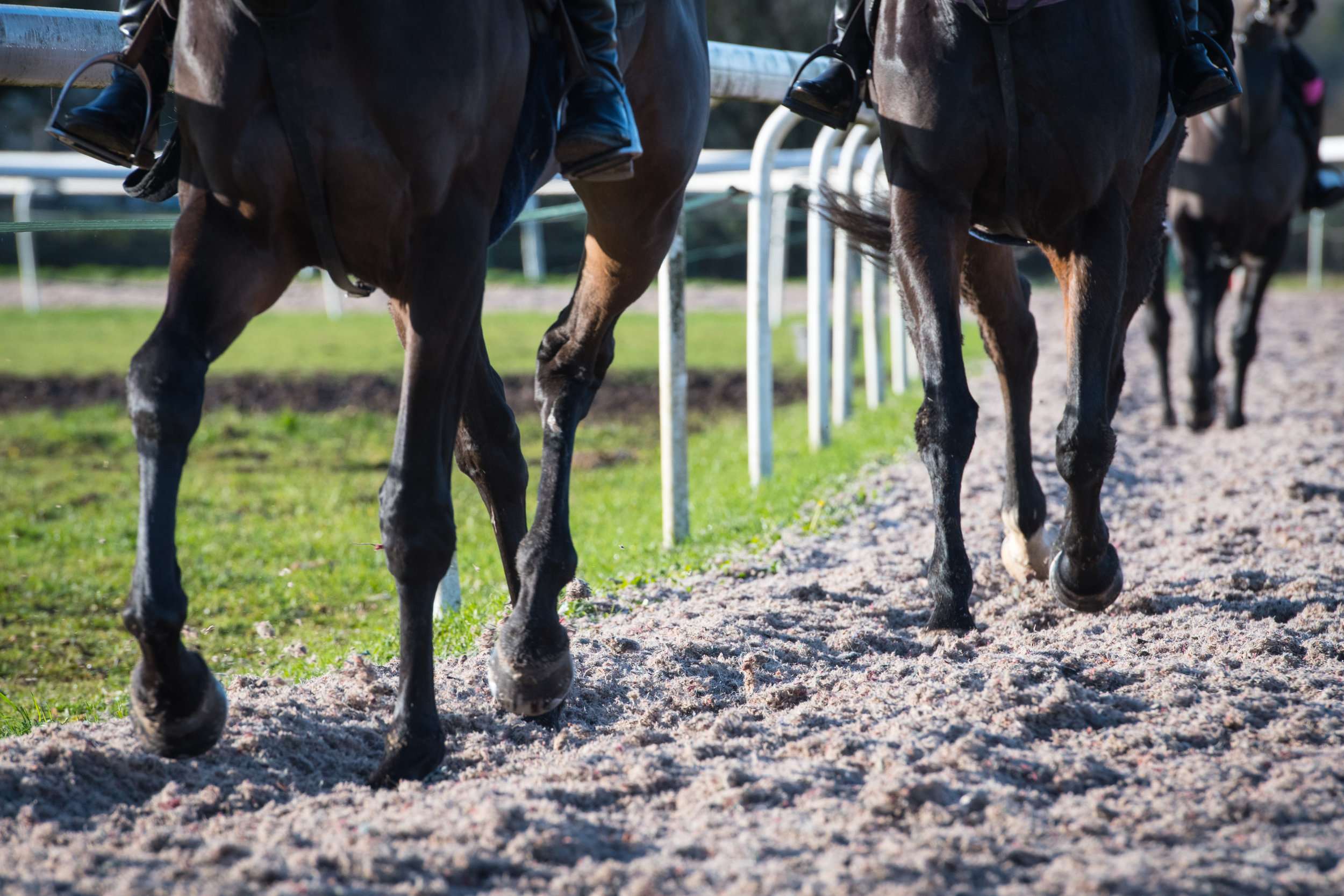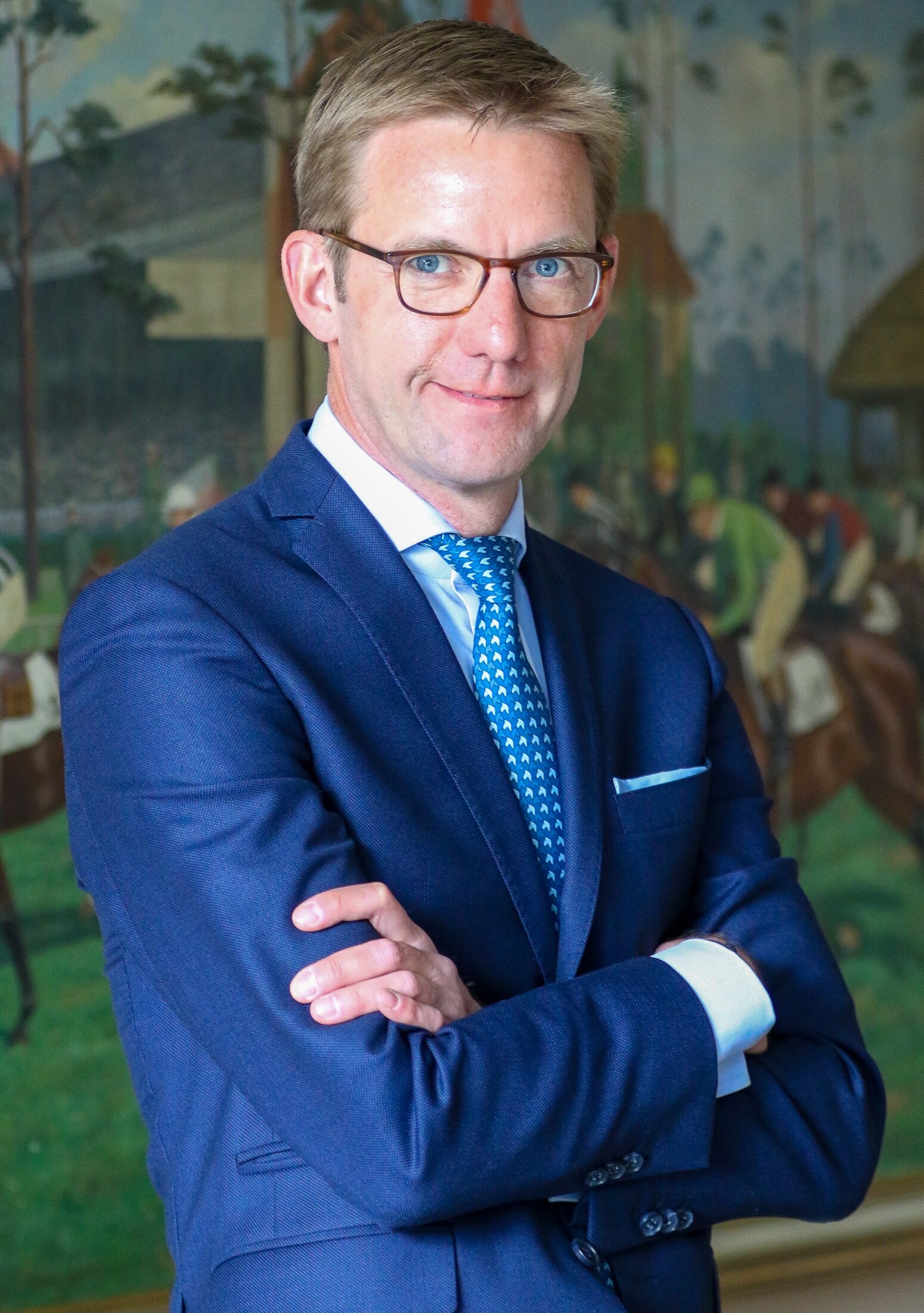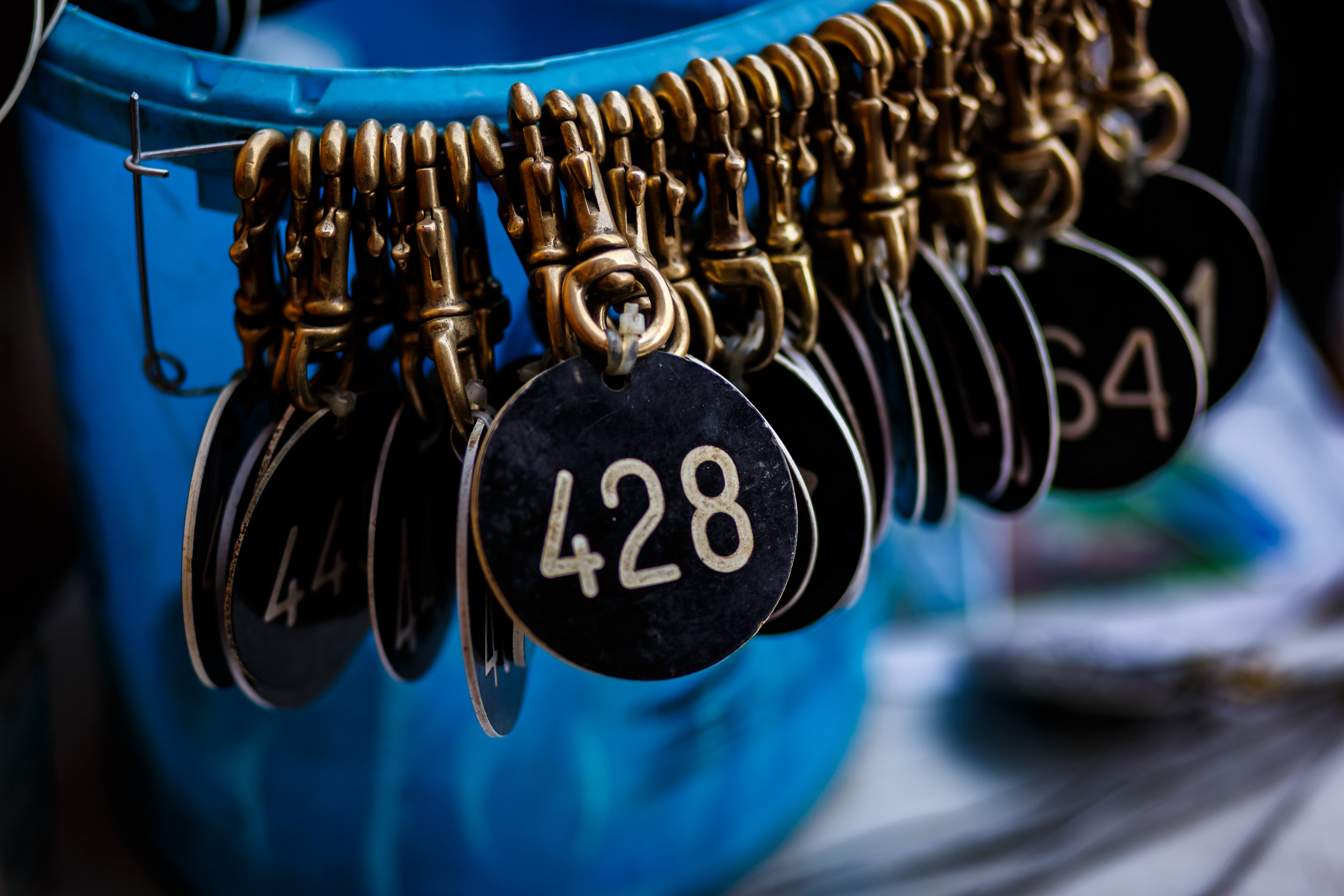Feeding for Weaning Success
By Dr. Emma Hardy, PhD
The first 12 months in the life of a foal are pivotal in building the foundations for overall long-term health and optimal development. It is also during this initial year that the foal will face its first major life event in being weaned from his dam, and he must cope with the nutritional challenges this may bring.
There are many approaches to weaning and every breeder strives to make the right choices for the best outcome. The reproductive status of the mare, the cost and time available, the plans for the foal, and the physical practicalities of the yard will often dictate which type of weaning strategy should be employed. They all come with their own benefits and drawbacks. Choosing the correct feeding and nutrition programme is key to your success.
Early growth
The dam’s milk is nutritionally complete, providing all the energy and nutrients required for a foal. However, at around three months of age, milk yield peaks, then naturally starts to decline, along with suckling frequency. At the same time the foal increases its intake of non-milk feedstuff such as grass, forage, and some concentrates as the his nutritional needs begin to overtake the mare’s own supply. This period coincides with rapid weight gain, with foals reaching around 30% of their adult weight by this point.
Genetics, breed, seasonal temperature differences, and nutrient availability will all contribute to the growth rate of the foal. Small fluctuations in growth rates are normal and nothing to worry about. However, continuing or significant deviations from the National Research Council (NRC) 2007 growth recommendations can predispose the foal to health issues, most notably orthopaedic problems. The structures and tissues of the foal’s body do not grow at the same rate: bone matures earliest, followed by muscle and then fat. Indeed at 12 months of age the yearling will have attained 90% of his mature adult height, which emphasises the importance of correct diet in supporting this rapid early bone growth.
Introducing creep feed
Although the foal supplements his milk intake with small quantities of the dam’s feed and forage, the introduction of a creep feed prior to weaning can help sustain normal growth rates. Highly digestible creep feed is formulated from milk proteins and micronised grain, and it’s fortified with vitamins and minerals. In addition to encouraging growth, it promotes gastrointestinal adaptation to the post-weaning diet and is also described as a significant factor in the reduction of weaning-associated stress.
The appropriate age to introduce a creep feed depends on many factors. For the foal at pasture and doing well, there should be little need for any additional nutrition until two-to-three months of age, when milk supply begins to diminish. Earlier intervention may be necessary should the foal be orphaned or fail to thrive due to inadequate milk supply or other environmental influences.
TO READ MORE --
BUY THIS ISSUE IN PRINT OR DOWNLOAD -
Why not subscribe?
Don't miss out and subscribe to receive the next four issues!
Brexit Interview - Andy Oliver
By Alex Cairns
Andy Oliver has held a training licence since 2004. Before setting up his self-contained establishment on his family farm in County Tyrone, Northern Ireland, he qualified as an equine vet and spent time with trainer Mark Johnston in Yorkshire, England. Having built his owner base thanks to consistent success from relatively humble means, his career took off in 2011 when Flowers Of Spring registered a first stakes success for the yard in a Group 3 at Gowran Park. The good results continued in 2012, with Group 2 wins for First Cornerstone and Sendmylovetorose contributing to a prize money haul of over €490,000. In 2014, Team Valor’s Panama Hat flew the flag, racking up five consecutive handicap wins. Panama Hat went on the next year to prove he was much more than a handicapper, scoring at Listed and Group 3 level as well as running second in the American St Leger.
Though stakes success has always been the yard’s ultimate aspiration, Oliver is also well known for sourcing good value stock and bringing along horses that might then be sold to race abroad. Sendmylovetorose was just a £5,000 purchase, and Oliver also handled future multiple Hong Kong Group 1 winner Luck Or Design and 2015 Queen Mother Champion Chase winner Dodging Bullets in the early stages of their careers.
The past two seasons have proven more challenging for the Oliver yard. Having had almost 300 runners on the Flat in Ireland in 2013, this number was down to 92 in 2017. Oliver has taken this time to regroup and recently finished upgrading his facilities. The revamped facility now features a five-furlong woodchip hill gallop, a seven-furlong woodchip gallop with a slight incline, and a three-and-a-half-furlong sand gallop. Such advanced infrastructure allows him to train any type of horse, whether Flat or National Hunt, and his 80 boxes have been steadily filling.
With a lot of work having been put in and difficult years weathered, Brexit is surely a complication Oliver could do without. It is still unclear whether a hard border will be instituted between Northern Ireland and the Republic of Ireland, but we can assume that the UK’s new arrangement with the EU will affect trade, transport, staff, and many other fundamental aspects of the racing industry. These issues will have a strong impact in both Britain and Ireland, with Northern Irish racing finding itself in a particularly precarious situation.
European Trainer spoke to Andy Oliver to gauge his thoughts on how Brexit might affect his business.
TO READ MORE --
BUY THIS ISSUE IN PRINT OR DOWNLOAD -
Why not subscribe?
Don't miss out and subscribe to receive the next four issues!
Brexit - How high are the stakes?
By Lissa Oliver
When Britain submitted its notice to withdraw from the EU in March 2017, one of the biggest issues became border control and movement of horses, particularly between the EU Republic of Ireland and its bordering British Northern Ireland. A hard border between the adjoining counties of Ireland presents its own physical and political difficulties, but any restriction on the movement of horses between Ireland, Britain, and mainland Europe gives rise to problems that affect us all.
The uncertainty of border control also impacts on the safety of the national herd and disease control. The main principle of the Tripartite Agreement was to prevent the spread of disease and that, as Irish Horseracing Regulatory Board’s chief veterinary officer Dr Lynn Hillyer reminds us, is crucial and arguably the biggest issue when it comes to Brexit negotiations.
Dr Lynn Hillyer
Currently, 10,000 horses move freely between the UK and Ireland every year. Seven thousand horses move overland between the Republic of Ireland (EU) and Northern Ireland (GB); 5,100 horses move between Ireland and France, the majority using Britain as a land bridge; and 5,000 horses move between Britain and France, according to Horse Racing Ireland (HRI) figures. Such freedom of movement is dependent upon the Tripartite Agreement, which will no longer be valid after 30th March 2019.
The Tripartite Agreement simplified the travel of horses between France, Britain, and Ireland and reduced the cost of moving horses between the three countries, allowing racehorses to be shipped without pre-movement veterinary checks and certification, and without the requirement for isolation and quarantine periods at their destinations.
“It’s not just about movement, it’s the protection of the herd against disease, and it’s absolutely critical that’s protected,” warns Dr Hillyer, who has been working with her French counterparts in ensuring that safeguards are in place in advance of the end of the Tripartite Agreement. “There has been added pressure on us because of the enormity of movement involved.”
Adding to the difficulty in resolving issues has been the British government’s reluctance to commit to decisions and state definite demands. MEP Mairead McGuinness has been advocating on behalf of Ireland and warned in January at the Irish Thoroughbred Breeders Association (ITBA) National Symposium, “We hope when we sit down to negotiate, common sense will prevail, but the EU is not prepared to tweak its principles to accommodate the UK. If we cannot overcome our problems, there will be real difficulties for your industry.”
Fortunately, there has been a concerted team effort between all sectors of the thoroughbred industry in France and Ireland as they united to draw up a proposal to replace the Tripartite Agreement. Rather than sit back and wait, they decided to put together a draft for an improved alternative to the Agreement, the High Health Status (HHS) document for horses. “What is lovely is how the racing bodies and breeding associations have all pulled together, and that’s something that has come through the talks really strongly,” Dr Hillyer says.
Working with the Turf Club were HRI, the ITBA, Horse Sport Ireland – the representative body for the sport horse sector of show jumpers, dressage, and eventers – and France Galop. Paul Marie Gadot, head of the horses and control department at France Galop, explains, “The EU Commission draft doesn’t fulfil all our wishes as the breeding stock isn’t included in their proposal. A lot of work is still to be done. To be clear, we are working on an expedited movement system for high health horses.
“Currently, we are going to suggest a solution to the European Commission, which is working on the new legislation regarding movements of horses in the European Community and with the third countries. Actually, we are trying to address the modification of the European Law regarding horse movement, which isn’t linked to the Brexit negotiations. This way is more technical and also safer. I will be happy when a new system allowing easy horse movements will be in place.”
Both Dr Hillyer and Gadot have been happy with the level of awareness and support from their respective governments. “Our contacts in the Department of Environment, Food and Rural Affairs (DEFRA) have been fantastic and their response to our queries have come back by return,” says Dr Hillyer.
“The public information seminars here are probably less frequent than in Ireland,” agrees Gadot. “The preparatory work is done with the representatives of the equine industry, especially at racing and breeding levels, and we are in permanent contact with the hard core in charge of preparing the future of racing and breeding in Ireland and UK.
TO READ MORE --
BUY THIS ISSUE IN PRINT OR DOWNLOAD -
Why not subscribe?
Don't miss out and subscribe to receive the next four issues!
HBLB Research on Injuries in Flat Racing: Nature versus Nurture
By Kristien Verheyen & Sarah Rosanowski
Musculoskeletal injuries are an inherent risk of horseracing, and they are the primary cause of thoroughbreds failing to train and race, or even retiring altogether. In addition to the evident equine welfare concerns, racehorse injuries also have economic consequences and impact on jockey safety. The industry remains committed to investigating causes of injury and associated risk factors, which can inform strategies aimed at minimising their occurrence. Advancements in methods of identification, management, and prevention of musculoskeletal disease and injury in Thoroughbreds and improved training and racing environments to enhance the safety, health, and wellbeing of racehorses have long been strategic priorities of the Horserace Betting Levy Board (HBLB)’s veterinary research funding program in Great Britain.
In 2014, the HBLB funded a research team at the Royal Veterinary College in London to undertake a detailed study of injuries and other veterinary events occurring in flat racehorses on race day. The purpose of the project was to establish causes of fatal and non-fatal injuries occurring in British flat racing and to examine associated risk factors. The research also set out to measure heritability of common injury types and conditions, and to investigate genetic and environmental correlations between injury and race performance.
The study team had access to detailed race and performance data from all Thoroughbreds racing on the flat in Great Britain over a 14-year study period from 2000 – 2013. These were then linked to veterinary reports of injury or conditions attended to by a veterinary surgeon on race day over the same time period, provided by the British Horseracing Authority (BHA). Finally, extensive pedigree data were added to enable investigation of heritability of race day injury and genetic correlations between injury types, and between injury and performance.
Descriptive findings
The final 14-year dataset included nearly 68,000 horses making over 800,000 starts in around 77,000 flat races. The majority of races -- 67% of them -- were run on the turf, with 33% of races taking place on all-weather tracks.
Just under 8,000 veterinary events were recorded over the study period, from which an incidence of nine events per 1000 starts was calculated. The most common incidents requiring veterinary attention on the racecourse were soft tissue injuries other than tendon and ligament injuries, e.g. wounds, lacerations, or muscle strains. Unspecified lameness and respiratory conditions were also common, accounting for around a fifth of veterinary reports each. Less than 10% of veterinary events had a fatal outcome, and the overall incidence of fatality was 0.8 per 1000 starts. Although bone injury was cited in only 14% of the veterinary reports overall, they accounted for the vast majority (77%) of the fatalities.
All-weather racing
Racing on all-weather tracks traditionally carries a higher risk of injury than racing on turf, which was reaffirmed in the current analyses. Therefore, the researchers also specifically investigated risk factors for fatality, distal limb fracture, and epistaxis (nose bleeds) in all-weather racing. These analyses were restricted to the ca. 258,000 all-weather starts in the dataset and included additionally collected information from the racecourse clerks on surface types and maintenance. The fatality incidence in all-weather racing was 0.9 per 1000 starts. Distal limb fracture occurred in around 1 in 1000 starts and epistaxis in 1.6 per 1000 starts. Risk factors varied for each outcome, although some factors were similar across outcomes including the going, racing intensity, horse age, age at first start, and horse and trainer performance variables. Generally, older horses and those that had started racing at an older age were at higher risk of an adverse outcome although for fatality, older horses that had started racing as two-year-olds were at highest risk. This association may be due to accumulation of microdamage in bone, which increases with increasing age as an effect of exercise accumulation over time and can ultimately lead to failure.
TO READ MORE --
Order this issue in print or download
Trainer of the Quarter - Pascal Bary
Click on the image to read --
TO READ MORE-
BUY THIS ISSUE IN PRINT OR DOWNLOAD -
Why not subscribe?
Don't miss out and subscribe to receive the next four issues!
From Fertility to Foal: considerations for digestive tract health
By Emma Hardy, PhD
The success or failure of any breeding program is dependent on the nutritional status and digestive tract health of foals, mares, and stallions alike. Although this aspect of the operation is often overlooked, it is only by ensuring that these considerations are optimised that foals are given the best chance to survive and thrive, from birth through weaning and on to sale.
A weighty issue
There exists surprisingly little research surrounding the nutrient requirements of the breeding stallion. This may be in part complicated by the great variation in activity; some stallions may serve several mares a day during peak periods in the breeding season, while others may serve only that number in a year. Other influencing factors may include temperament, management routine, and competitive activities. However, it is generally agreed that energy demands are indeed above maintenance levels, and according to various National Research Council studies it has been suggested that active stallions require approximately a third more digestible energy than their non-breeding, sedentary counterparts.
Research in other species has shown that a body condition that deviates greatly from the ideal can be associated with an increased risk of infertility (Nguyen et al. 2009). Nutritional content is also of great importance, with zinc and omega-3 fatty acids playing important roles in sperm motility, mobility, and viability.
Extremes in body weight and condition can also affect the fertility of broodmares. Low levels of body fat in mares can inhibit or delay ovarian activity, and obesity is often associated with insulin resistance (equine metabolic syndrome, or EMS), which can also disrupt cyclicity. Gentry et al. (2002) found that mares with a body score of 3-3.5 demonstrated a longer anaestrus than mares with a good body score (eg., 5) (Henneke et al. 1983) and was accompanied by lower plasma leptin, prolactin, and insulin-like growth factors.
It would therefore be sensible to carefully manage the weight and condition of both broodmares and stallions to optimise breeding potential.
Safely improving body condition and weight
For horses struggling to maintain ideal body condition it is important to assess forage intake and quality, and to also increase concentrates. Energy-dense grains and fats are often employed in these situations; however, caution must be taken to avoid the digestive tract issues these can cause.
Adding fat-fortified feeds to the diet, or top dressing fats or oils, can be an effective way to increase caloric intake. However, oils can pose a palatability issue. For a significant caloric contribution, somewhere between 200-500 ml/day of vegetable oil would be required. This would also increase the need for additional vitamin E and selenium to counteract the greater antioxidant need of a horse on such levels of supplementation.
The horse is naturally limited in its capacity to digest large volumes of starch, so concentrations should be limited to about 2g starch/kg body weight per meal, which equates to 0.2% starch or 1.4kgs of grain per meal. Anything over this risks starch bypass through to the large intestine, which can cause a bacterial inversion and ultimately a range of issues from poor feed absorption and inflammation to colic and laminitis.
TO READ MORE --
BUY THIS ISSUE IN PRINT OR DOWNLOAD -
Why not subscribe?
Don't miss out and subscribe to receive the next four issues!
Stable Staff: How do European governments classify and enforce racing's workforce?
By Lissa Oliver
Just over a year ago, in February 2017, the Workplace Relations Commission (WRC) served four Compliance Notices on Ballydoyle, the training establishment owned by Coolmore. Irish trainers held their breath as the result of an appeal by Ballydoyle was anxiously awaited. That appeal was rejected in January of this year and will result in major repercussions for the industry.
The WRC was established in October 2015 under the Workplace Relations Act 2015 and replaced the National Employment Rights Authority, the Labour Relations Commission, and the Director of the Equality Tribunal. During an inspection of Ballydoyle in May 2016, WRC inspectors identified breaches of the Organisation of Working Time Act, involving failure to provide sufficient breaks and rest periods for five grooms and exercise riders.
This situation arose from what many would argue to be the unnecessary February 2015 Irish Amendment of the 1976 Industrial Relations Act, which was amended to exclude the rearing and training of racehorses from being recognised as agricultural labour. Interestingly, stud farms and their staff are not affected by this ruling, as horse breeding is still considered to be an agricultural activity.
The amendment made was not required by European law, but individual nation states are free to make such exemptions within their own legal system as they deem necessary. Therefore, since February 2015, Irish racehorse training yards do not qualify for the same working hours exemptions that have been agreed in agricultural workplaces, as defined by industrial relations law.
The 2015 Amendment was not widely publicised and escaped the attention of most trainers, but the WRC targets two industries each year for inspections, and the equine industry was among those specifically targeted for 2017, with around 60 inspections carried out.
Why Ireland’s racing staff are not agricultural workers...
TO READ MORE --
BUY THIS ISSUE IN PRINT OR DOWNLOAD -
Why not subscribe?
Don't miss out and subscribe to receive the next four issues!
Equine Herpesvirus-1 : An Elusive Target
By Neil Bryant
Infectious diseases are not uncommon in racehorses in training, breeding stock, and pleasure horses. Some of the more serious diseases can be financially devastating to the animal’s owners and to the equine industry on the whole. Viruses belonging to the herpesvirus family cause some of the most well characterized equine infectious diseases, and the most problematic of these is equine herpesvirus 1 (EHV-1; species Equid alphaherpesvirus 1). EHV-1 is ubiquitous in most horse populations in the world. It is responsible for major economic and welfare problems causing respiratory disease, neurological disease (mainly seen in adult horses), and abortion and neonatal foal death in pregnant mares.
This was most notably highlighted by the multiple abortion outbreak recorded in Hertfordshire, England, between February and April 2016 in fully vaccinated animals (http://www.aht.org.uk/cms-display/interim-report16-april2.html). Studies have determined that EHV-1 is a common cause of abortion. Occasional cases have also been linked to EHV-4 infection, but this is much rarer and doesn’t account for episodes of multiple abortion, as is seen occasionally with EHV-1.
The virus
EHV-1 was first isolated from an equine abortion in the U.S. in the 1930s. At the time of first isolation the vets weren’t sure what it was, but they knew it was infectious. Subsequent genetic analysis much later led to the classification of the virus in the genus Varicellovirus (family Herpesviridae), together with its close relatives equine herpesvirus 4 (EHV-4; species Equid alphaherpesvirus 4) and equine herpesvirus 8 (EHV-8; species Equid alphaherpesvirus 8). Interestingly it is grouped with, and is therefore genetically similar to, the human herpesvirus responsible for chickenpox, the Varicella Zoster virus. Initial infection of horses was thought to occur around weaning, when virus-neutralizing antibodies transferred to the foal from the mare’s colostrum had declined enough to make them susceptible to infection. However, virus has been isolated from foals as young as seven days old with high antibody levels but without any significant clinical signs. Immunity to re-infection after primary infection is relatively short-lived, lasting between three-six months, but it is rare for naturally infected mares to abort in consecutive pregnancies.
TO READ MORE --
BUY THIS ISSUE IN PRINT OR DOWNLOAD -
Why not subscribe?
Don't miss out and subscribe to receive the next four issues!
Castrating racehorses: A routine procedure not without its pitfalls
By Tom O’Keeffe
A recent study published in the Equine Veterinary Journal assessed the routine procedure of gelding and the complications associated with this procedure. The research was a retrospective study of horses castrated at the Sha Tin training complex in Hong Kong, between July 2007 and July 2012.
Hong Kong is a unique training and racing environment, and all horses training and racing there are imported, as there is no breeding in the region. Fillies are rarely imported. The majority of colts are castrated at some stage in their career, and open standing castration (OSC) is the method of choice by the vets of the Hong Kong Jockey Club (HKJC). Until now, nobody has looked at the prevalence of complications following castration of horses at the HKJC. This recently published study aimed to describe the prevalence and severity of complications in the 30 days following castration.
Reasons for gelding a racehorse in training
Most trainers perceive geldings as easier to train than colts, and if the horse has not shown enough ability for a stud career to beckon, there is little to lose by gelding. In Hong Kong, due to the unique environment the horses live in, there is an added incentive to geld these horses sooner rather than later. Once gelded, their management becomes significantly more straightforward.
Castration Method Options
Three surgical techniques are commonly used for equine castration: 1) open, in which the parietal tunic surrounding the testicle is incised and, usually, retained; 2) closed, where the portion of the parietal tunic surrounding the testis and distal spermatic cord is removed, and 3) half closed, where an incision is made through the exposed parietal tunic at the cranial end of the testis or distal end of the spermatic cord allowing the testis and part of the spermatic vasculature to be prolapsed through the incision prior to removal.
In most cases, racehorse castration is done standing via the open technique under local anesthetic, with sedation and pain relief as necessary. The testicles and spermatic cords are first injected with local anesthetic to numb the region. Once the tissues are totally desensitized, a slash incision is made into the scrotum. The testicle is exteriorized, and it is removed with a surgical instrument called an emasculator. The emasculator has a set of interlocking crushing blades with a cutting blade placed at the bottom of the array. Once the testicular cord is clamped in the emasculator the testicle will usually fall off, but the cord is retained within the interlocking crushing blades for approximately one to two minutes. This creates trauma to the tissues, which causes them to swell once the crush is released, reducing blood flow. The second effect of the emasculators is for the blood to be held in position long enough to begin the clotting process, which carries on once the clamp is removed.
An alternative method of castration is to anesthetize the horse and carry out the procedure with the horse on its back, as a completely sterile operation in an operating room. This has the advantage of minimal post-castration swelling as there is no infection in the area, which can be a common problem with standing open castrations. In horses who are cryptorchids (ridglings), which is when there is only one descended testicle in the scrotum, standard open standing castration is contraindicated. These horses require either castration under general anesthetic or testicle removal under standing surgery via laparoscopy (inserting a camera and instruments into the abdomen to remove testicle via a surgical incision).
Complications of Castration
As with all intrusive surgical procedures, there is the potential for things to go wrong. While the castration procedure is relatively straightforward, post-operative complications including excessive edema of the scrotum and surrounding tissues, infection and fever, hemorrhage, lameness, hydrocele formation, peritonitis, eventration, penile paralysis, scirrhous cord formation, and death have been recognized.
With castrations done under general anesthetic, there are all the attendant risks of putting a 1000lb animal on its back and up again. All anesthesia carries a risk of death in the horse. This has been calculated as approximately 1% in equine practice, and can be as low as 0.5% in the major well-equipped equine hospitals. In addition to this, occasional cases show prolonged bleeding after the surgery, which results in significant swelling that sometimes has to be resolved by opening the scrotal sac.
Intestine is prolapsing through the castration site - this severe castration complication requires immediate veterinary attention.
For standing castrations, some of the problems encountered include prolonged bleeding, which can occur irrespective of the length of time the cord has been clamped for. This can become serious enough to require a further surgery to identify the bleeding vessels and tie them off, but thankfully this is rare. Another rare complication is herniation of intestines through the potential space left in the inguinal canal with removal of the testicle. The intestines can either get trapped under the skin producing severe colic, or worse still, dangle out of the abdomen and become contaminated. This presents a very serious risk to the horse’s survival and requires immediate surgery to attempt to clean the exposed bowel and return it to the abdomen. Fortunately this is extremely rare in the Thoroughbred.
However, the most common complication is infection at the site of the castration. This procedure leaves an open wound and obviously the horse can lie down in bedding full of urine and feces on the same day it has been castrated, therefore potentially contaminating the open surgical site. Unfortunately many racehorses’ ability to be turned out in a paddock is often controlled by the training environment they reside in. Infection post-castration, and the added expense and lost training days associated with it, is a bugbear for trainers and vets, and this study reviews a common problem encountered worldwide.
Hong Kong Study
The Hong Kong training complex provides full-time stabling and training facilities to approximately 1250 horses spread out among 24 licensed trainers. The Department of Veterinary Clinical Services (DVCS) at the HKJC is the sole provider of veterinary care for this population. All clinical records of horses in training at the HKJC are collated within the Veterinary Medical Information System (VMIS). For a horse to be eligible for inclusion in the study, two testicles had to have been removed via an open standing castration. Veterinary records of all the horses that had been castrated were examined and any cases that did not meet the criteria were excluded.
Data on complications that occurred in the 30 days following castration was extracted from the clinical notes in the VMIS. The data was reviewed and the severity of complication was categorized into one of the five groups below:
Between July 2007 and July 2012, 280 racehorses in training were castrated. A total of 30 horses were omitted from the study, as they did not meet the inclusion criteria: 24 horses were castrated using general anesthetic, of which six were cryptorchid surgeries. Horses included in the study were in the care of 24 different trainers, with thirteen different veterinarians performing the castrations.
Twenty-four hours after castration, this horse has mild scrotal swelling, which would be classed as Group C1 in the Hong Kong study.
TO READ MORE --
Buy this issue in print -
Why not subscribe?
Don't miss out and subscribe to receive the next four issues!
Amateur Riders - More than just a tradition
By Chris Dixon
Courage, honour, elegance, and fair play. That is the list of values that underpin the ethos of the Fegentri – the International Federation of Gentlemen and Lady Riders. They are values that Elie Hennau refers to regularly as he speaks with enthusiasm and pride about the organisation of which he is now president, and his own career as an amateur rider.
“I won the Amateur Riders’ Derby at Epsom in 1999 on a 25/1 shot and beat Ryan Moore who was second on one for his father. My whip did not comply with the British standards and I had to borrow one. It was Frankie Dettori who gave me his whip for the race so I beat Ryan using Frankie’s whip – this is probably the thing I’m most proud of in my whole life!”
Now 44, Hennau held down a full-time job whilst enjoying a 15-year spell in the saddle, during which time he rode in around 1000 races and partnered almost 100 winners. As a rider in the Fegentri series he met new friends, experienced different countries, and got a great thrill from the sport. Racing helped him grow, and now it’s time to give something back. “If I’m completely transparent then this wasn’t the best time in my life to take on this presidency as I already have too many things to do and this is an unpaid job. But I do it for the love of the sport. Maybe I was expecting to do this when I was a little older, but the opportunity was there and I wanted to give back to racing all of the great things racing gave to me.”
Created by a group of enthusiastic amateurs at St. Moritz in 1955, Fegentri has expanded and developed into an organisation whose membership currently consists of ‘clubs’ in 23 different countries across four continents and has a high-profile sponsor in Longines. The mission of the organisation is to promote international races for amateur riders and to organise the Fegentri World Championship. As Hennau explains, “We don’t organise the races as such, but we provide the riders for them and organise the championships. There are two world championships, one for gentleman riders and one for lady riders. This year there were 60 races across 40 different tracks in 15 different countries, and we had seven gentleman riders and 10 lady riders.”
Not every member sends a representative every year, and the idea is for the series to be contested by the best amateurs around the world, with each member currently able to send just one rider, either a male or female, to represent them. “There is a minimum of five wins required to ride in the series and every country can decide who they send, but normally they should be the champion. Ideally they should be the best and if not, they must be one of the best.”
Hennau regularly speaks about the emphasis on quality riders competing in the series. “I am not worried about quantity; I care about the quality. By that I mean the quality of riding ability, which is the first element, but also the quality of values.” He then explains the other key component of selection to race as part of Fegentri: “It is also important that the riders represent our values, and the message to our members is, ‘Please send a rider that corresponds to our values of courage, honour, elegance, and fair play.’ It is only when a member has a rider of the right quality who holds the right values that they should be put forward.”
Fegentri President briefing the Gentleman Riders in Madrid.
It’s by ensuring quality amateurs are in place to ride and through sticking to these values that Hennau can have confidence in the capabilities of riders taking part in Fegentri, and he is keen to press the point home to help ensure the series continues to thrive. “It’s a combination of having racing authorities that understand the need to keep this alive, of having local clubs that explain the series to their trainers, and going to those trainers to tell them that we need their help.” He is aware and understands that some trainers, especially in the major racing jurisdictions where the quality of horse is that much higher, may have some reservations about trusting an unknown rider to give their charge a safe ride that they are happy with. However, he believes that these reservations are misguided. “My message is that we have top quality riders. I want to let trainers know that the boys and girls riding in these races will be top quality riders, comparable to the best amateur riders you could have in your own country.”
TO READ MORE --
Order this issue in print or download
Why not subscribe?
Don't miss out and subscribe to receive the next four issues!
Chantilly - Looking ahead to the next generation
By Giles Anderson
Racehorses have been trained in Chantilly since anyone can remember. It would be fair to say that the horses are part of the fabric of the town, perhaps just as much so as the bobbin lace, which Chantilly was famous for in the 17th century.
Matthieu Vincent, Trainer Centre and Racecourse Director and Marin Le Cour Grandmaison, Assistant to the Director, have the responsibility of managing the racecourse and training grounds.
Surrounded by forest and located some 30 kilometres from Paris, Chantilly is the iconic home of French racing and training. Managing the hectares of training grounds and the racecourse is no easy task, but the responsibility lies in the hands of Marin Le Cour Grandmaison and his boss Matthieu Vincent, who splits his time between Chantilly, Deauville, and Maisons-Laffitte. They see themselves as ambassadors for racing in Chantilly, evangelical about what the town has to offer and keen to expand the centre’s reach to up-and-coming young trainers.
Spending time in their company, it becomes clear that their primary focus is to give the trainers the tools they need to train horses better.
Site plan of Chantilly Training Grounds
Take Montjeu, who according to Vincent was not only his favourite horse but quite a quirky customer to train. “The horse was difficult and John (Hammond) did a great job with him. We would have him working at the racecourse at 5am. One day Cash Asmussen came to the racecourse to ride but John didn’t want him to gallop, just trot. He wanted him trotting for 500 hundred metres. But after 20 metres Montjeu wanted to go. So John stopped him and we ended up opening the racecourse to repeat the exercise five or six times and eventually he relaxed. We would do that for any trainer and it wouldn’t make any difference to us if they wanted to do something special at 5pm in the evening, we are here to help our clients.”
Chantilly is home to 110 trainers and approximately 2500 horses, of which 250 are jumpers (National Hunt). “In 2010 we had 2400 flat horses and 600 jumpers here and the average trainer was maybe 60 years of age,” says Vincent.
“If we compare Chantilly and Newmarket, Newmarket is more of a dream for some owners because they have a lot of classic younger trainers -- that’s good, the young. We need to have younger trainers, we want to help the young trainers here. It used to be every trainer’s dream to train here. Now we have the provinces, look at Jean Claude Roget: in 2005 he started to have classic horses but he’s not from Chantilly. So some said, ‘Maybe you can be a good trainer anywhere in France.’”
Chantilly Racecourse used to open for 12 days a year, but with the advent of all-weather racing in 2012 that number has jumped to 45. “But we have less and less horses in training in Chantilly since 2012. The track has helped us retain horses. It helps the trainers. Twenty years ago it was so quiet here and horses were just walking and trotting, but now with the all-weather tracks we’re training every day.”
The all-weather track has proven to be a good investment for the local economy, partly funded by the town, which put in €1,500,000 of the €5,000,000 cost. The annual tax income runs into a healthy seven figure sum. On top of that, the town is home to 2000 workers whose income comes from the racing industry, with a staggering 50% of the workforce being stable staff or riders. Who knows what the shrinkage would have been like if the all-weather hadn’t happened.
TO READ MORE --
Buy this issue in print or download
Why not subscribe?
Don't miss out and subscribe to receive the next four issues!
Lissa Oliver's Spring Sales Analysis
By Lissa Oliver
A question that has divided commercial breeders and racehorse trainers since Tattersalls first decided to auction thoroughbreds is the definition of The Big Day.
For trainers, it is a major race at a major festival. Although every commercial breeder dreams of a high-profile winner, their big day is a major price at a major sale. Why else do we differentiate between commercial breeders and those who breed to race, lamenting the loss of the traditional owner-breeder at every dispersal sale?
If the outcome of the matings and sales preparation resulted in The Big Day for both parties, there would be no complaints, but as some have learned to their cost, the sales topper doesn’t always reach such dizzy heights again. The excitement and anticipation generated by the final knock-down figure builds to hype if and when the sales topper makes its racecourse debut, but can sometimes be followed by immediate disappointment and obscurity.
But is this always the case, and for all of the elite sales horses? And how does a big day in the sales ring affect the elite two-year-olds, prepared for the breeze-up sales that are often referred to as ready-to-run sales? Are the juveniles ready to run or, as some trainers suspect, over-boiled?
To see if any emerging pattern can shed light on these questions, I looked at the racecourse performances of the best-selling breeze-up juveniles and three-year-old National Hunt store horses from certain sales. I chose the period of 2005 to 2014 to obtain 10 years of data and to allow for the most recent of the graduates to reach their potential on the track, and I followed the careers of the 10 highest-priced lots sold (not unsold or bought in) at each selected sale. Because the Goresbridge Breeze-Up sale only began in 2006, a total of 490 horses were included from the five selected sales.
As most trainers earn a living by trading horses, career earnings often have little relevance on whether or not a purchase turned a profit. Many of the graduates here have gone on to long careers in Japan, Hong Kong, Dubai, Australia, or the USA, so their second-hand value is likely to have exceeded their original purchase price. In the case of the fillies, a residual paddock value also renders their career earnings redundant. However, the earnings on track do provide a measure of the ability of the individual and the longevity of career. A non-blacktype winner amassing more than €30,000 has undoubtedly been a top-class handicapper or a tough and consistent performer throughout a lengthy career.
What is quite shocking to see is that some British-trained horses who have both won and placed second during their career have amassed only €4,000 or less in earnings. This covers just eight weeks of training fees and is surely scant reward for a winning horse, particularly when in Ireland, for example, minimum prize money has risen from €6,000 to €10,000 and a single win could pay the bills for five months.
Regardless of whether a Flat breezer or National Hunt store horse can recover its purchase price, we can be sure that the store horse will at least recover its physical and mental well-being by the time its career begins. Many trainers of two-year-olds argue differently when it comes to the breeze-up graduates and so we must also examine the results to see if the preparation for these sales has any negative effect. Though times are not officially taken at European breeze-up sales, it can be assumed that the 10 highest-priced two-year-olds put in the most impressive gallop, so it will be of interest to see how this impacts, if at all, their immediate career.
TO READ MORE --
Order this issue in print or download
Why not subscribe?
Don't miss out and subscribe to receive the next four issues!
Joseph O'Brien - King of the Hill
By Alex Cairns
Lineage matters in racing. The entire thoroughbred endeavour is based on selective breeding aimed at producing quality and even ‘perfection.’ Of course, thoroughbred breeding isn’t an exact science, with humbly bred horses sometimes defying their roots and blue-bloods regularly failing to live up to the promise of their page. But pedigree still reigns as the most reliable gauge of innate ability in racehorses.
In centuries gone by, humans too were judged on their parentage and given a particular standing based less on aptitude than origin. These days our social structure tends to be more of a meritocracy, in which people are born equal and gain a position through achievement.
Being the grandson of a successful trainer, son of two successful trainers, and nephew of a successful trainer, those in the racing game might say Joseph O’Brien has the perfect pedigree for the job and will logically excel.
At the same time, his background has afforded him a head start via a family owned yard and well-stocked address book. As we discovered in a recent interview, however, the soon-to-be-25-year-old takes nothing for granted and is determined that his operation will succeed on its own merits.
THE HILL
Severe snow and unseasonable cold had brought much of Britain and Ireland to a standstill in the week prior to our interview with Joseph O’Brien. Such conditions can prove a challenge even on the flattest, most accessible terrain. O’Brien’s yard, which operates under the banner of ‘Carriganog Racing,’ rests on the slopes of Owning Hill in County Kilkenny, a secluded location accessible only by small country roads.
This setting might be problematic in extreme weather, but it provides the foundation for a gallop that has proven its value in the training of several decades’ worth of winning racehorses. A steep uphill stretch of seven furlongs with a high hedge on one side, it was masterminded by Joseph’s grandfather Joseph Crowley. It then passed into the hands of Crowley’s daughter Annemarie. A certain Aidan O’Brien took the reins after marrying Annemarie, and then Annemarie’s sister Frances kept things in the family when the O’Briens moved to Coolmore’s famed training facility at Ballydoyle in 1996.
Stepping out of the crisp morning air into the yard office, Joseph reflects on his family’s longstanding relationship with this land. “Granddad originally came here and it was just fields. He had a few horses and started cantering them from the bottom of the hill to the top on a dogleg. Then Mum and Dad took over, then Frances. Over time it was a plough gallop, then artificial, but the layout is pretty much the same as it was 40 or 50 years ago. This office is actually where my bedroom used to be, though I don’t really remember living here as we moved over to Ballydoyle when I was four or five.”
With two trainers as parents, Joseph has been steeped in the profession from day one, making the training vocation a question of both nature and nurture. “All my life I’ve been in this environment and training was always my goal. There was no backup plan, as I don’t know anything else, to be honest. I was raised at Ballydoyle and worked there from as soon as I was able. I went to Jim Bolger’s for a week for work experience at school, but other than that I never really saw anyone else training except Dad.”
TO READ MORE -
Buy this issue in print OR DOWNLOAD -
Why not subscribe?
Don't miss out and subscribe to receive the next four issues!
Trainer of the Quarter - Roger Teal
Click on the image to read
Buy this issue in print -
Why not subscribe?
Don't miss out and subscribe to receive the next four issues!
EMHF - Positive EU decisions give cause for optimism
By Paull Khan
There have now been no fewer than five European Commission decisions, over the past five years, which have given the green light to member states wishing to introduce state aid in favour of their horseracing industries and which should be of great interest and encouragement to a number other European racing industries. If lessons can be learnt from these cases, this may help the racing industries in other European countries construct the arguments necessary to follow suit, thereby improving the financial health of our sport across the region.
Racing authorities the world over are engaged in conversations with their governments, seeking to establish, protect, or maximise statutory funding for horse racing as well as to safeguard the future health and stability of the industry and that of the breed. Normally, this funding takes the form of a statutory return to horseracing from betting.
So, typically, the racing authority must first provide good arguments to answer the question of why government should support such a guaranteed return to horseracing from betting (which would normally constitute special treatment for the sport). Then, in many cases, a further question has to be successfully answered: “Why should Government feel confident that objections on the grounds of state aid will be overcome?”
These five decisions – relating to France and Germany (in 2013) and to the UK, Finland, and Denmark (last year), are examples of racing authorities not only having convinced their governments to provide such assistance, but also of their governments having successfully argued before the European Commission that the measures introduced constituted ‘compatible’ (ie admissible) forms of state aid. These decisions should be of interest to those racing industries that either:
have no current statutory support, but where their government either allows, or is contemplating allowing, betting operators independent of the sport to take bets on their racing, or
have statutory support, but where the level of that support can be demonstrated to be insufficient to sustain the country’s racing industry, and/or the terms of that support can be shown to be in some way unfair.
TO READ MORE --
BUY THIS ISSUE IN PRINT OR DOWNLOAD -
Why not subscribe?
Don't miss out and subscribe to receive the next four issues!
Trainer Profile: Colin Tizzard
“He’ll win the King George, two years’ time, you wait and see!” Given that the speaker is Colin Tizzard, who has saddled the last two winners of the Grade 1 chase, the opinion carries weight, but a warm chuckle from him downplays the gravity of his statement.
Tizzard, his son Joe, and a group of owners are in jovial mood as they watch a pair of promising young novices school upsides at the trainer’s Venn Farm Stables in Dorset, south-west England.
Home to some of the most successful trainers, past and present, in National Hunt (Jumps) racing, the region has long been a hotbed for the sport and also for Point-to-Point (PTP) racing, a related category of amateur thoroughbred racing over fences which is often a starting point in the careers of National Hunt jockeys, trainers, and horses.
Tizzard is one of a number of trainers in the area who have a background in Point-to-Points and have made a successful transition to racing under Rules. His team has firmly established itself as one of the top 20 National Hunt stables in the country season in and season out, having started with two pointers to support his son’s embryonic riding career more than two decades ago, while also running the family dairy farming business.
The stable’s run of form has notably progressed from very good to excellent in the past three years. Last season was Tizzard’s best to date, when he finished third in the trainers’ championship to the two trainers who have dominated the British National Hunt scene for the past decade or so, Nicky Henderson and Paul Nicholls.
So what has propelled Colin Tizzard to the highest echelons of the trainers’ table?
To read more - subscribe now!
Buy this issue online here
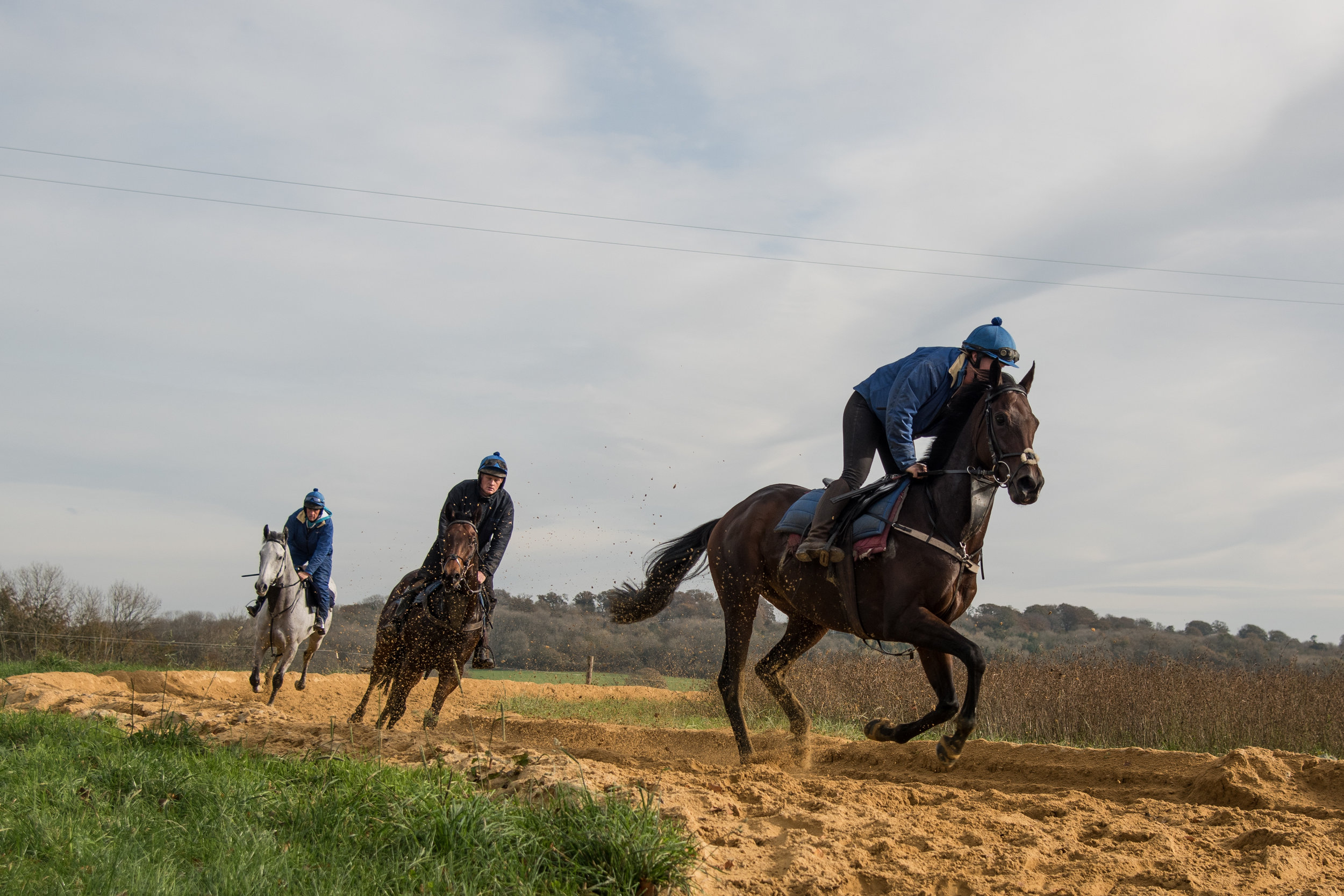
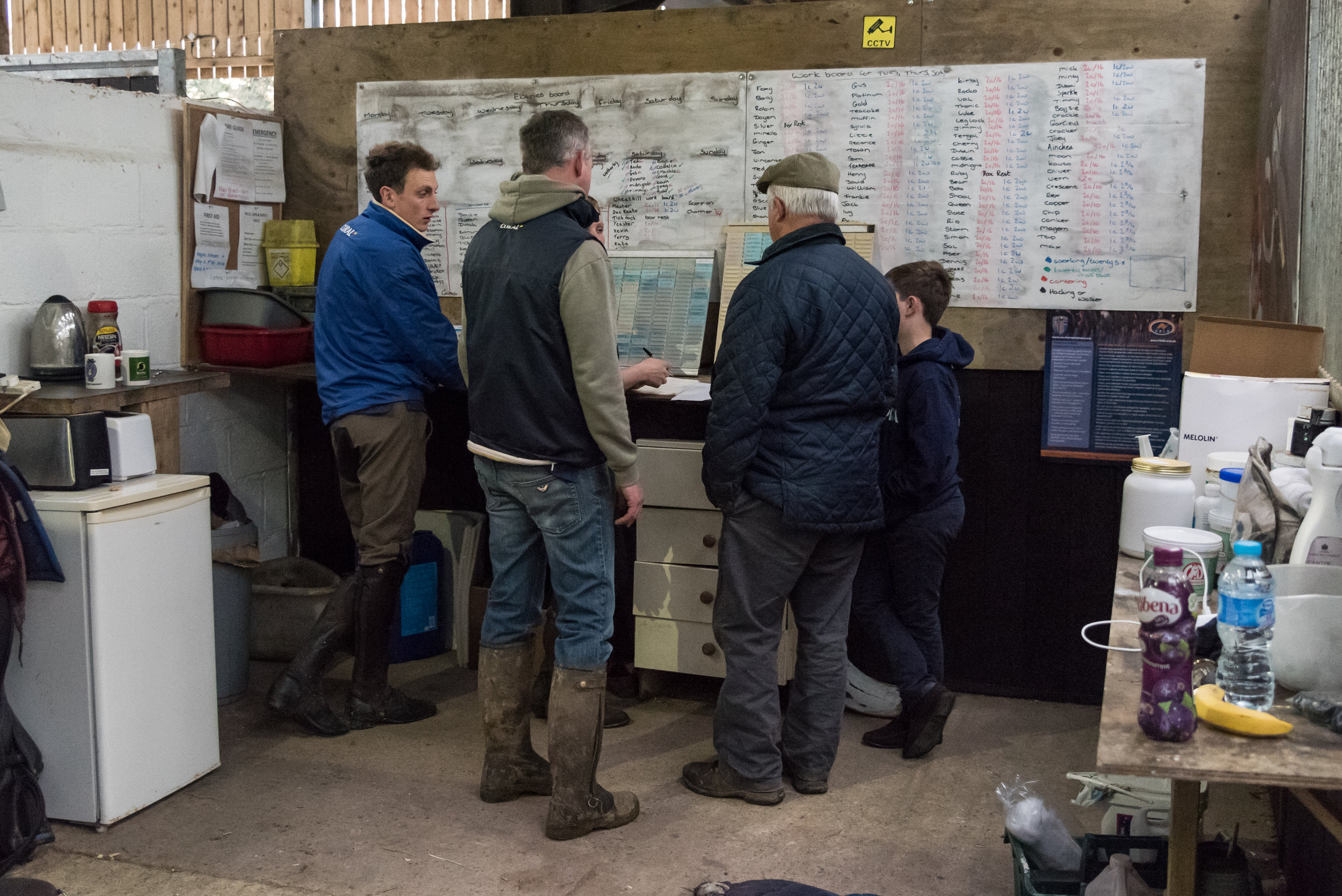
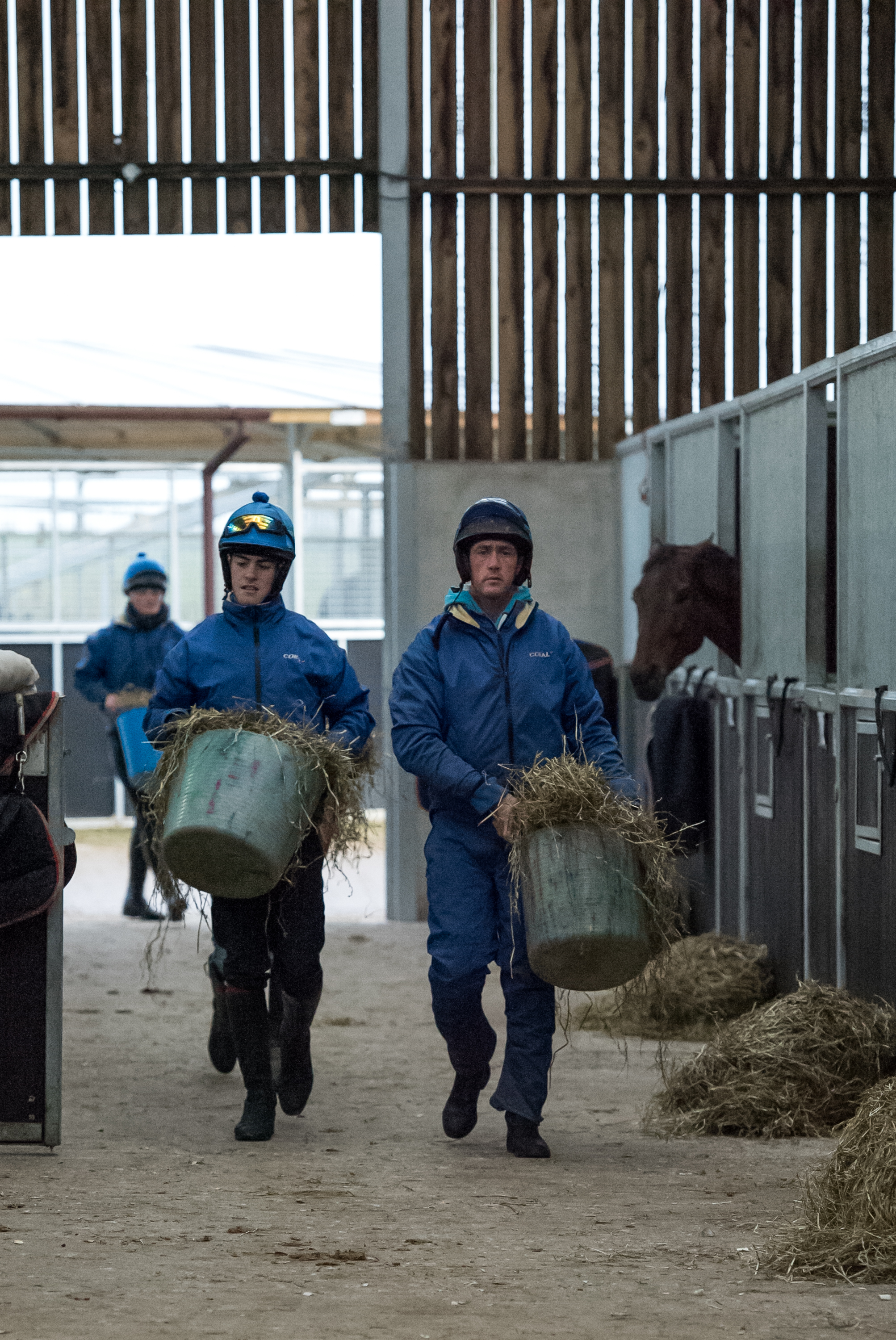
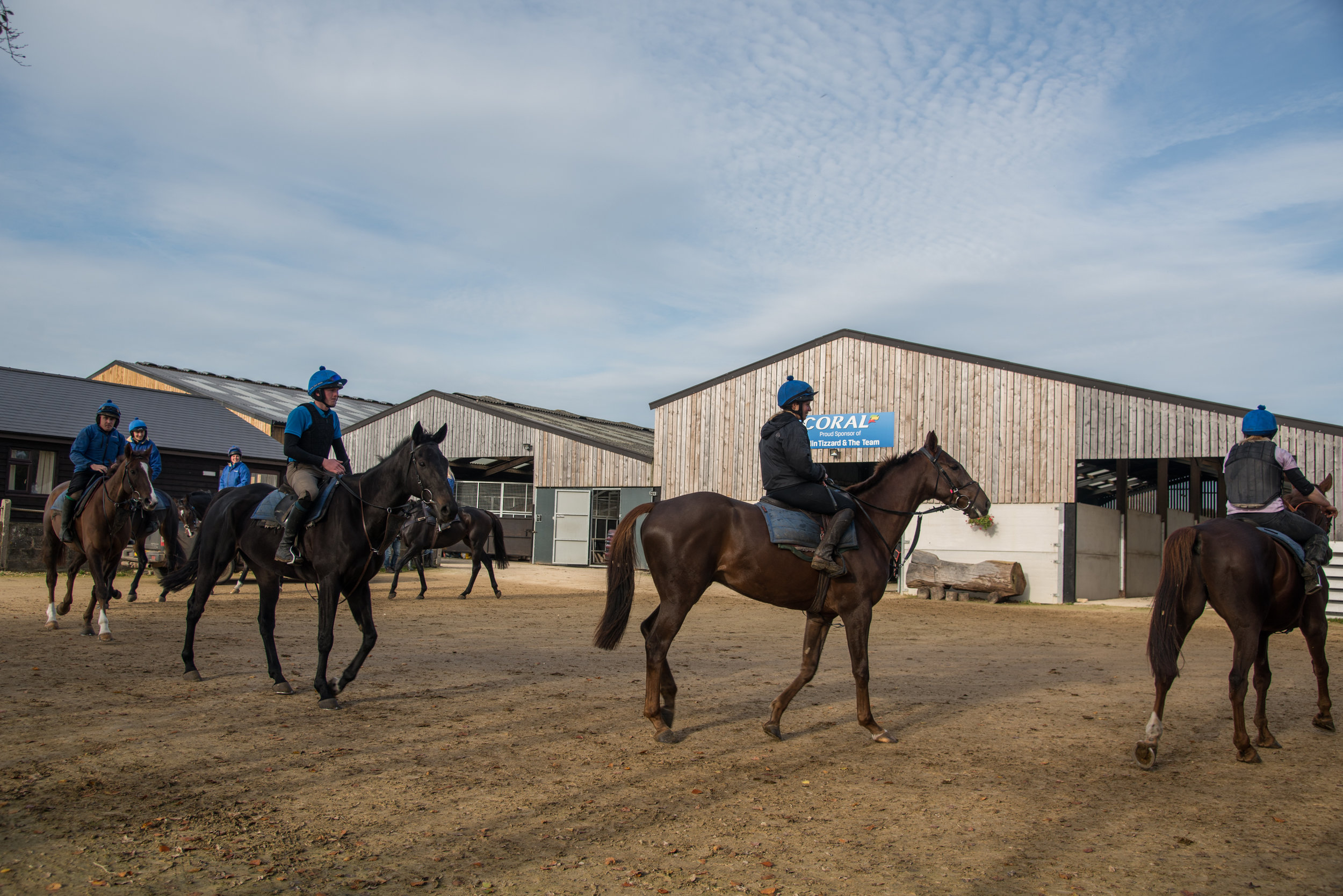
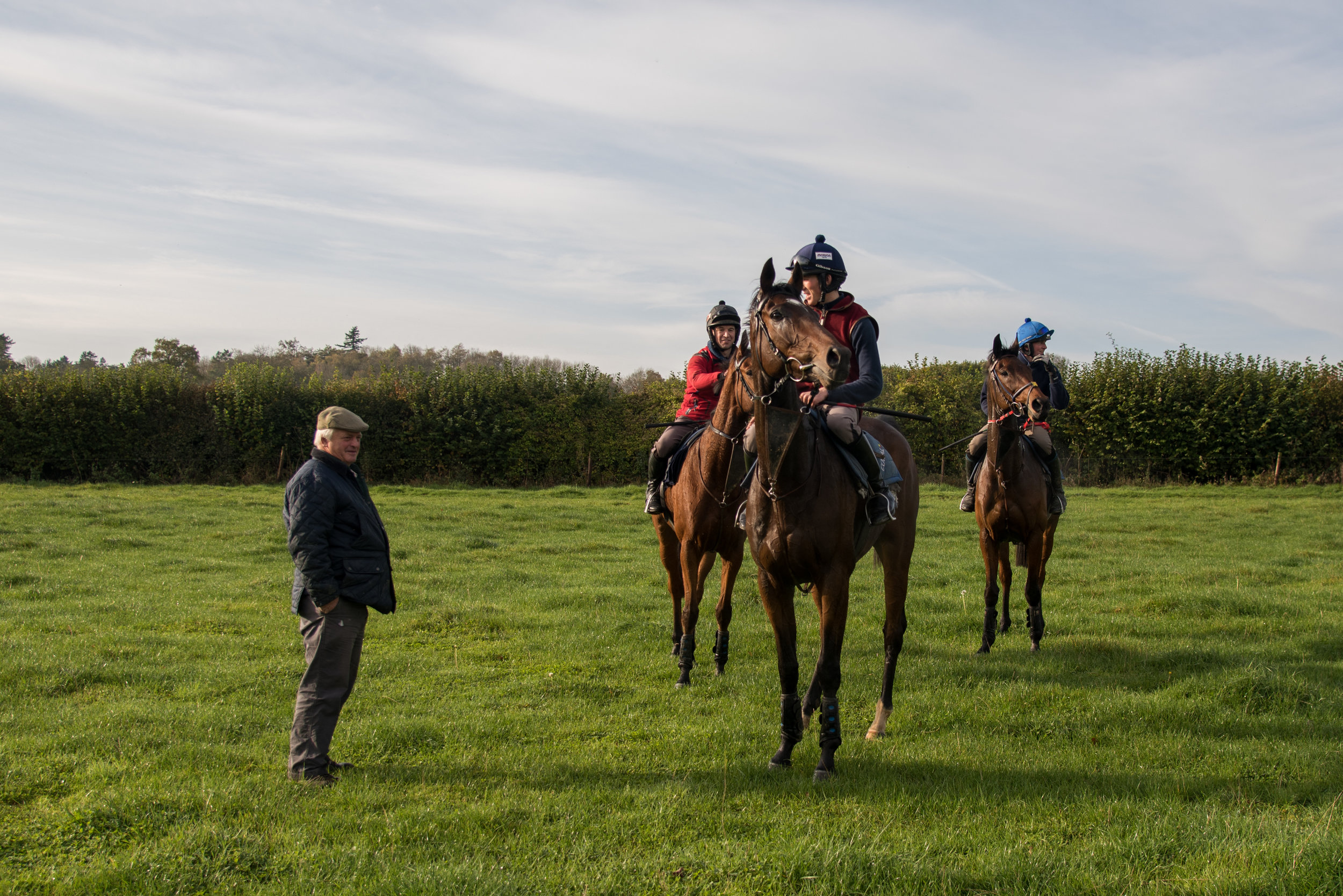
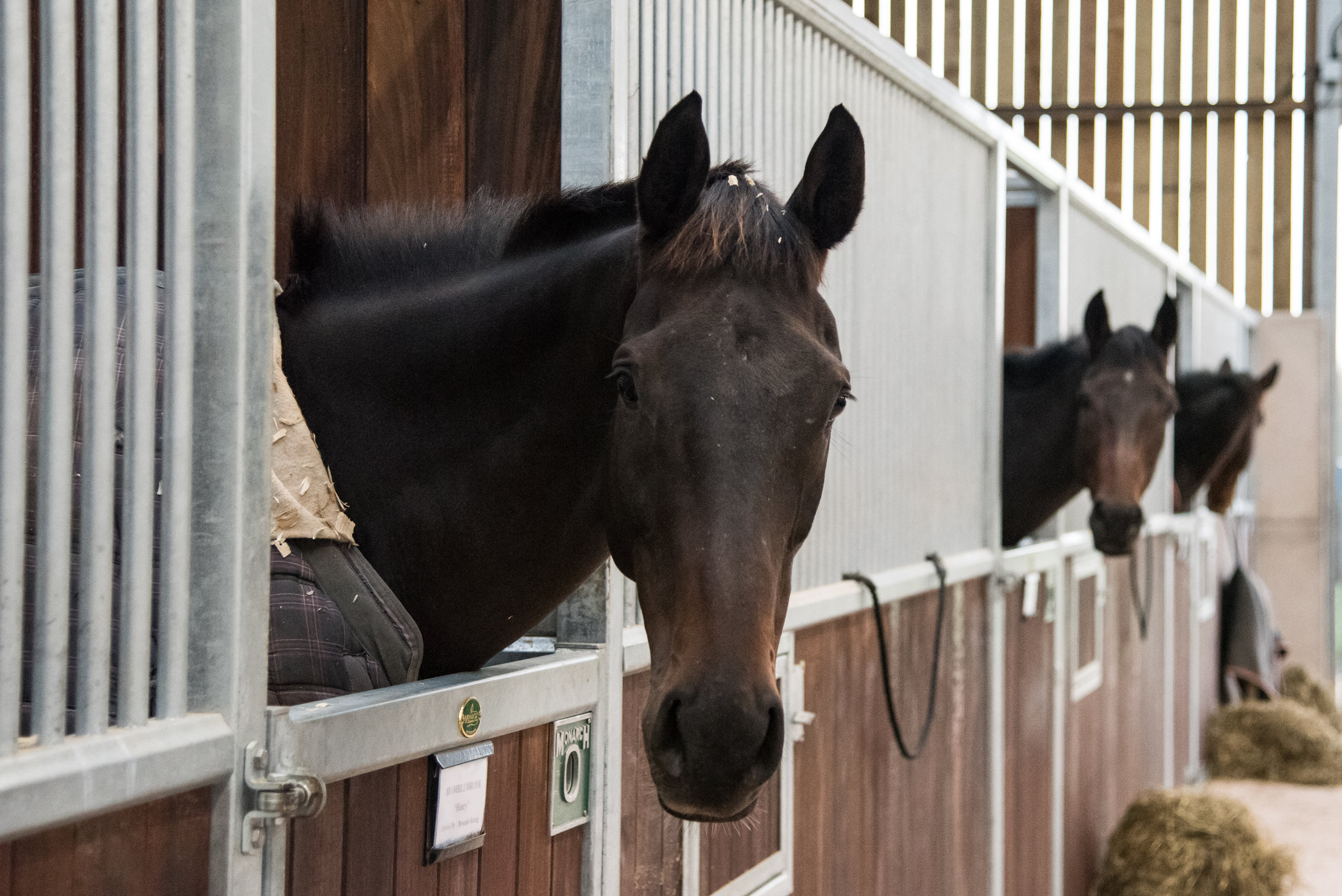
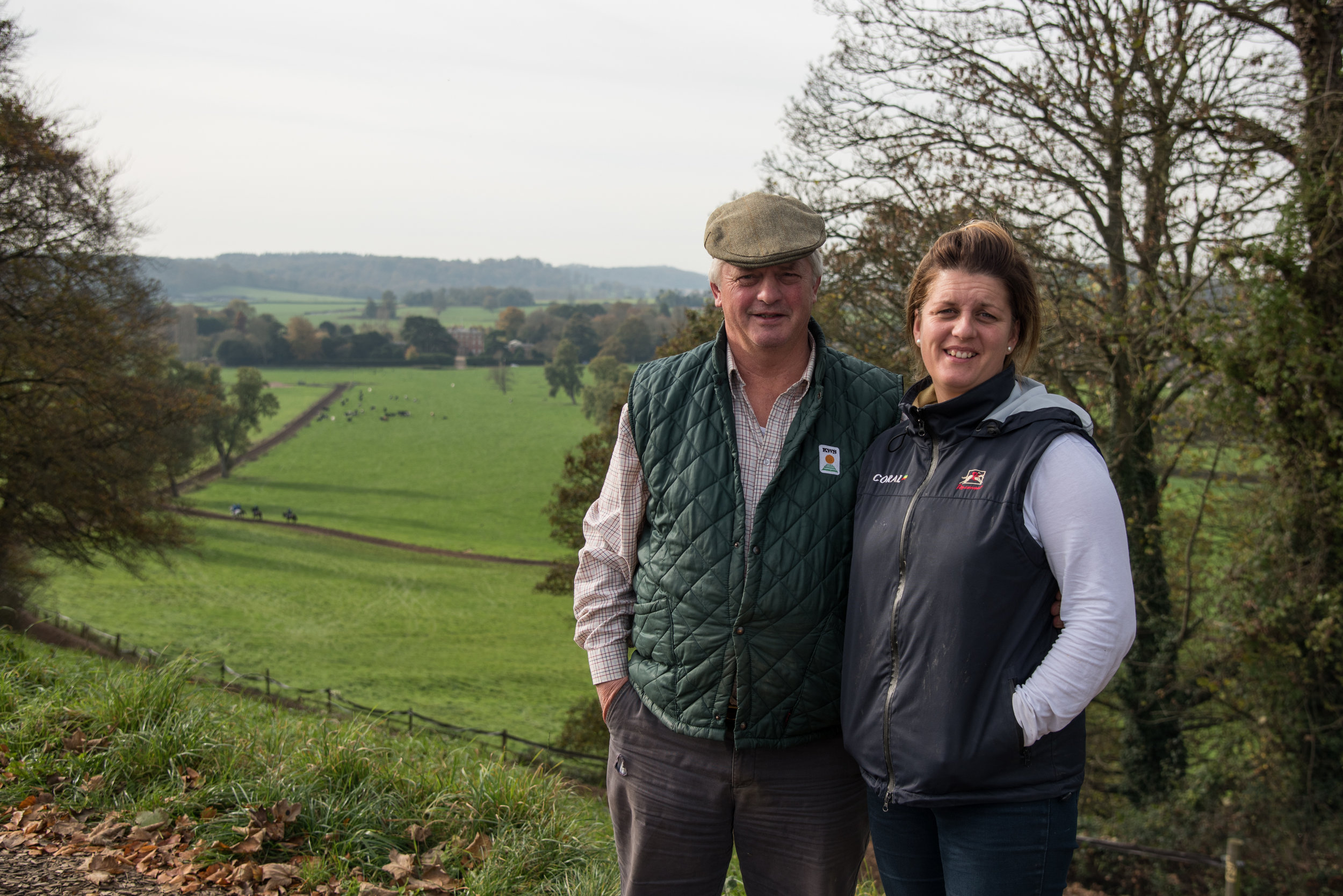
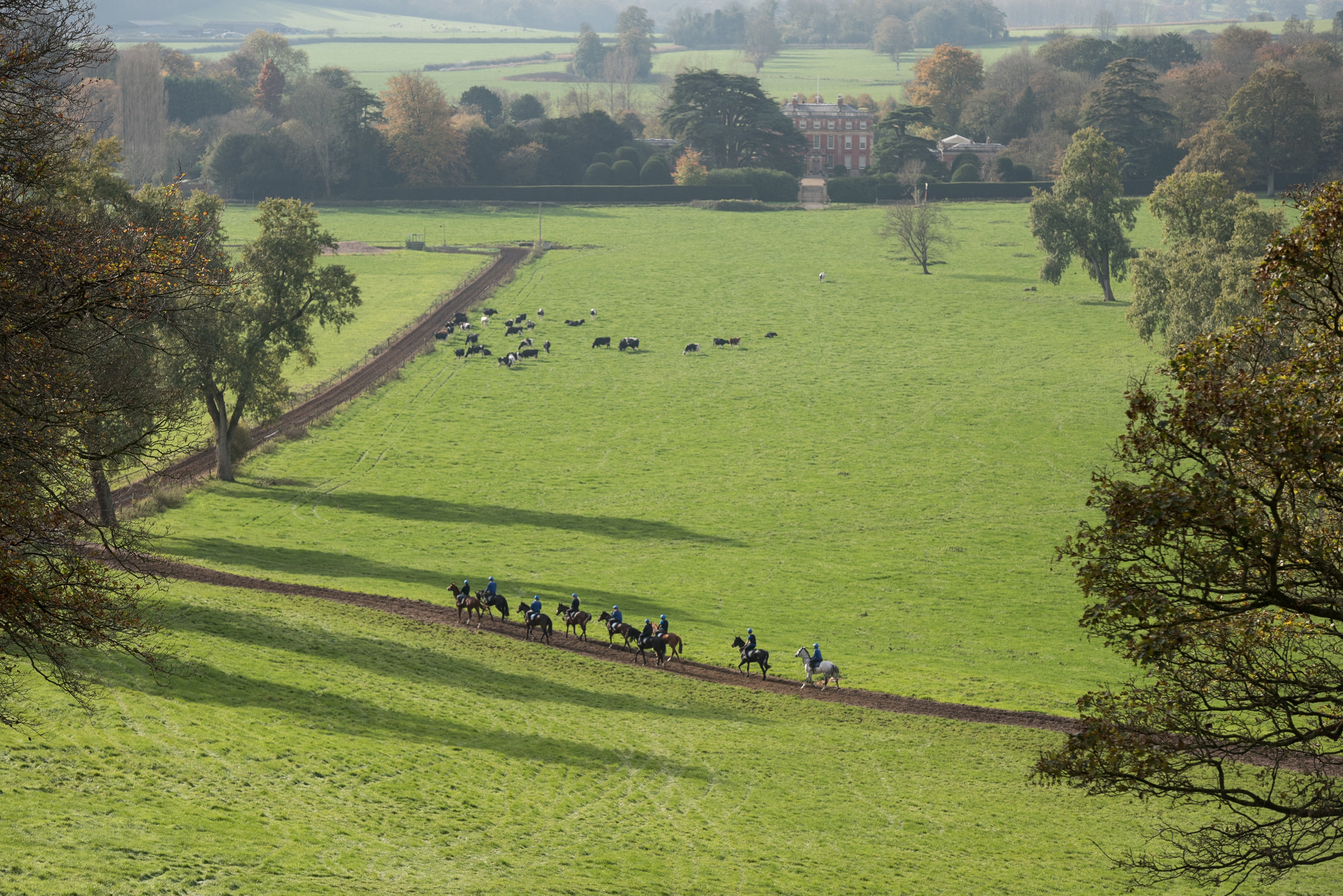
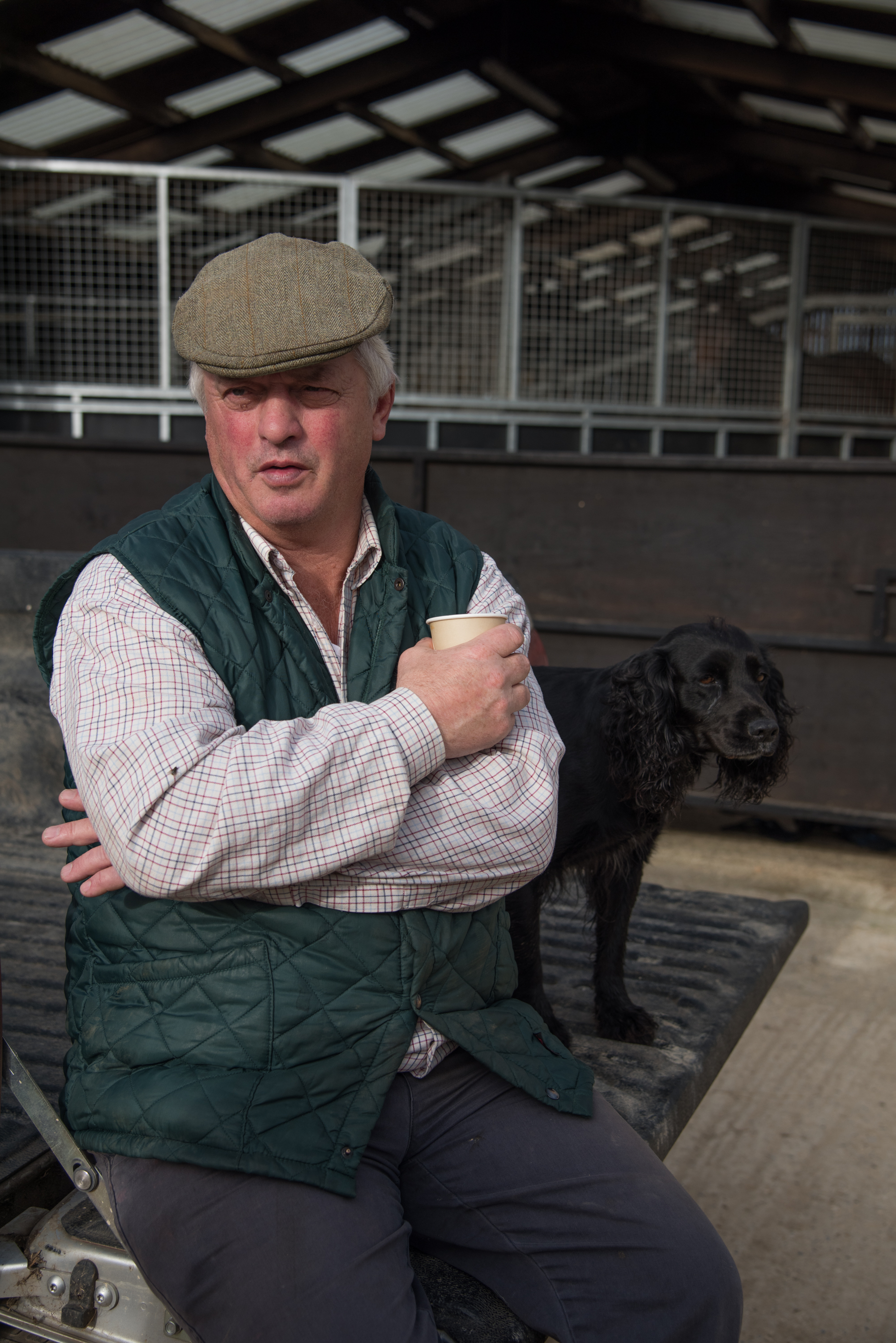

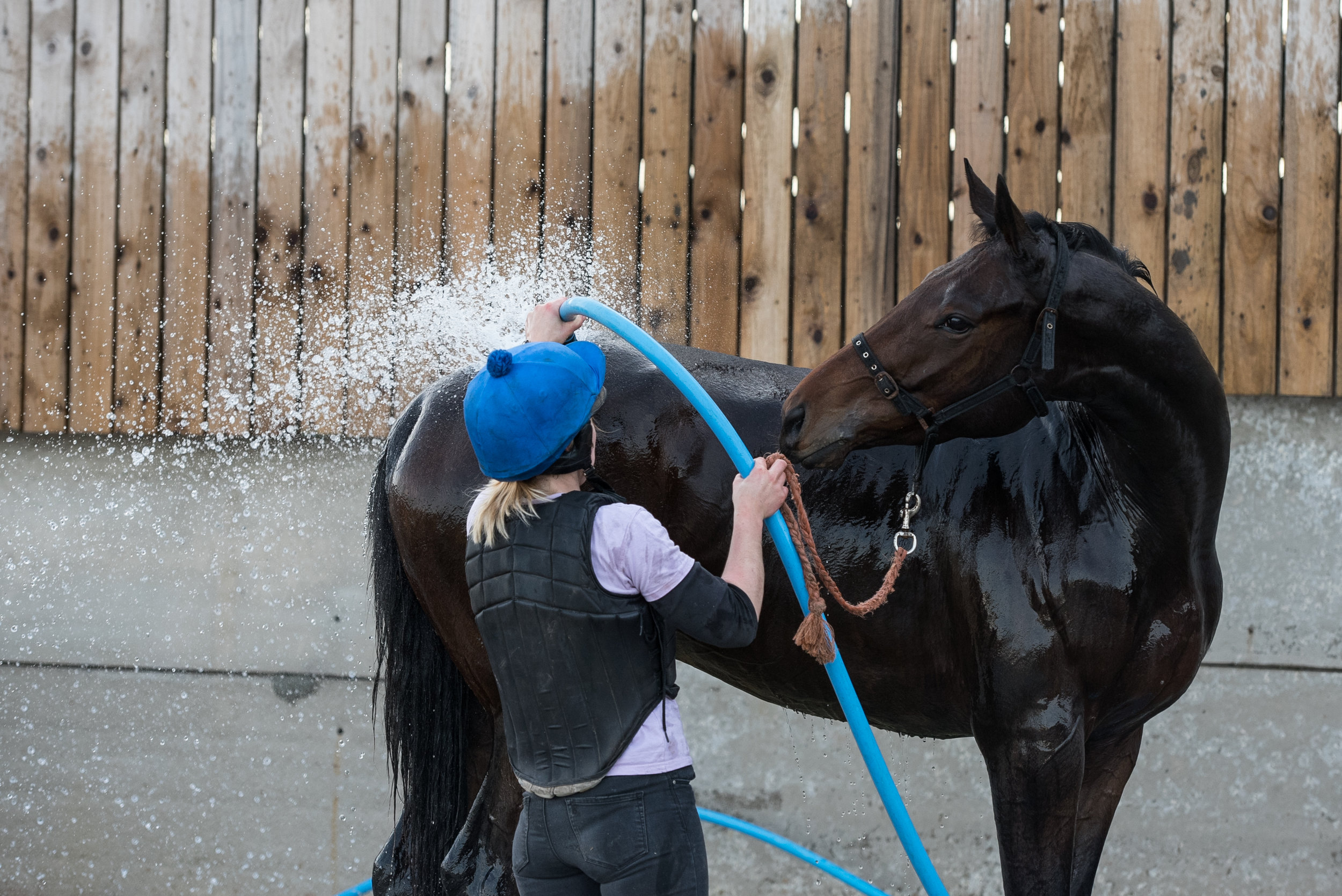
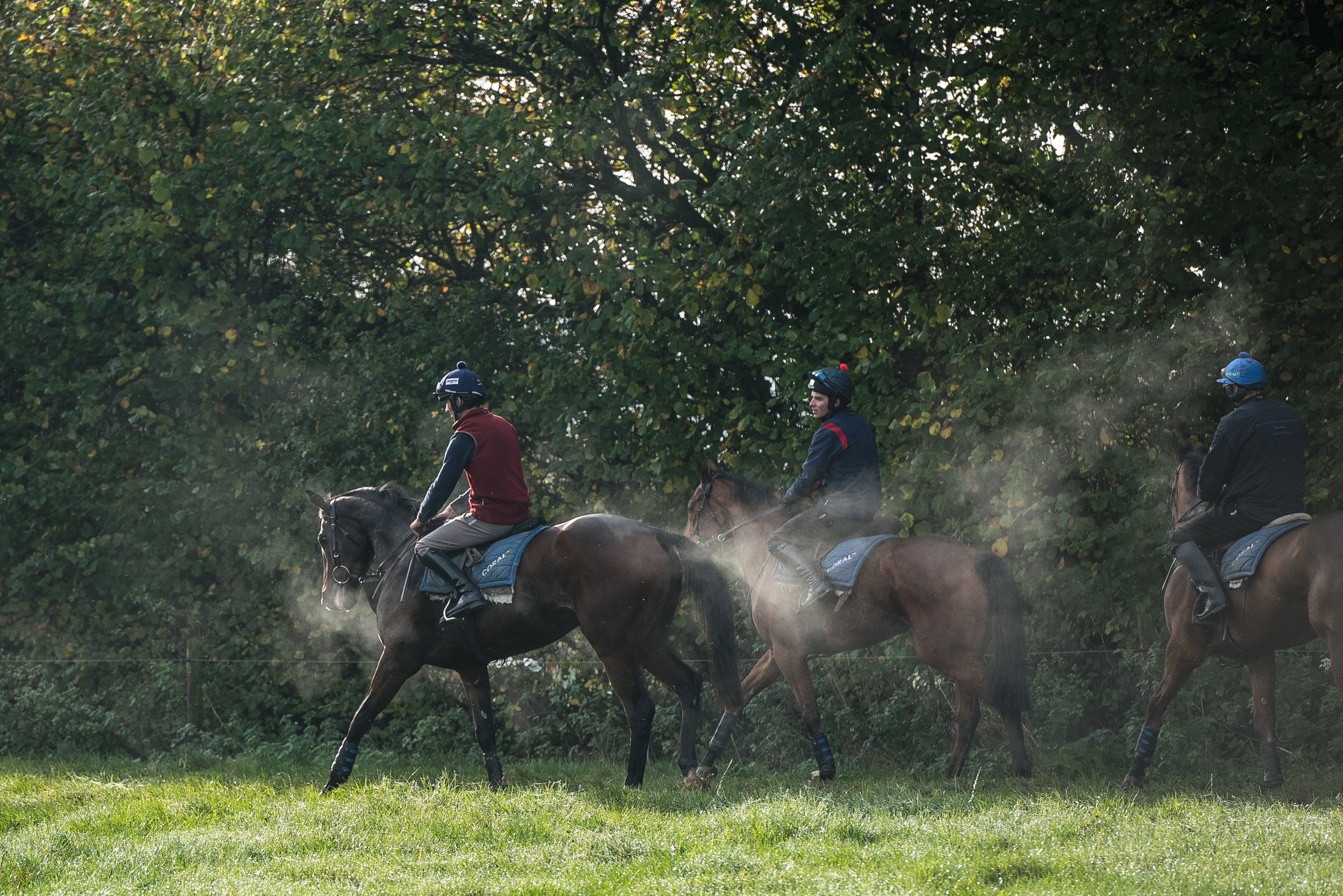
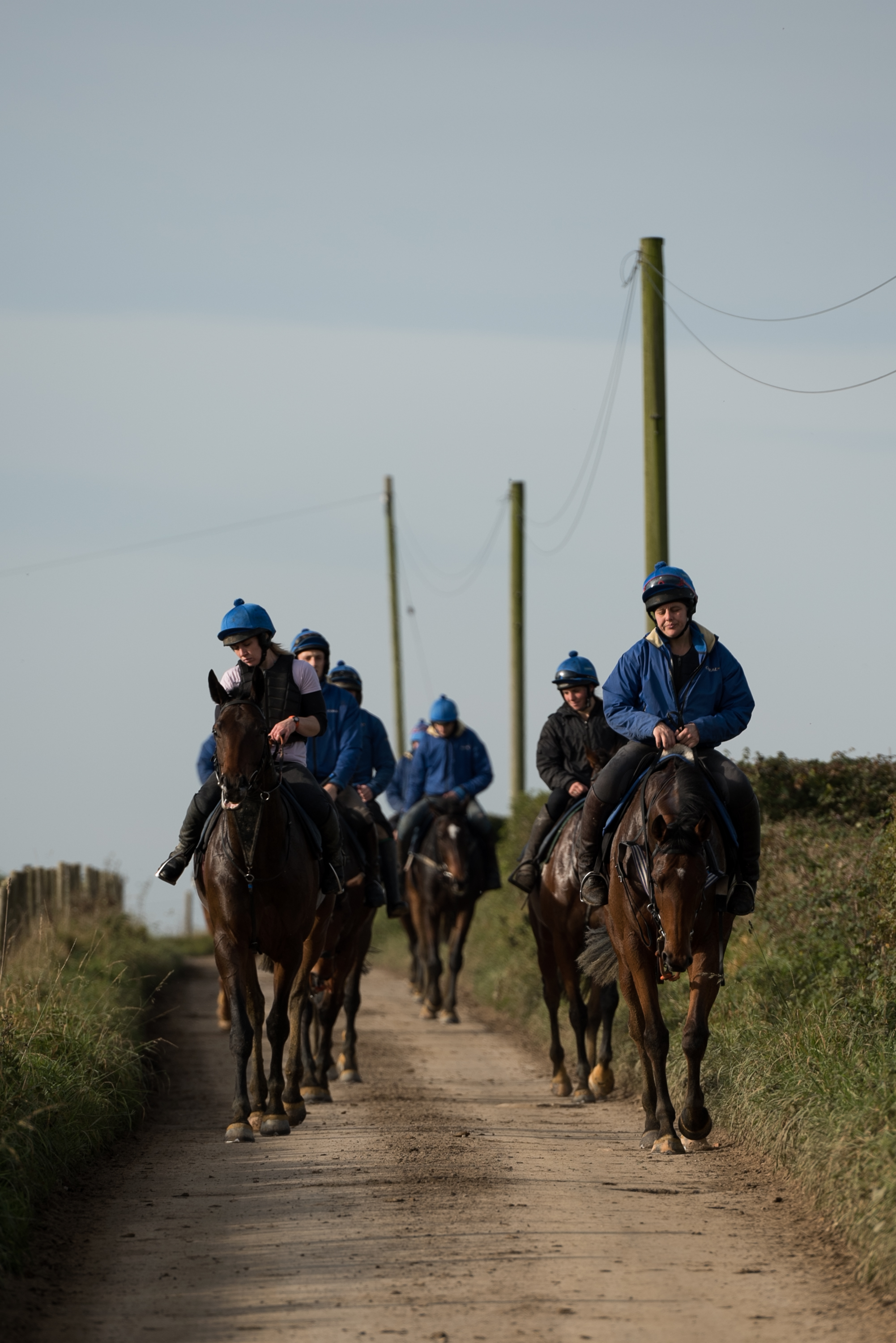
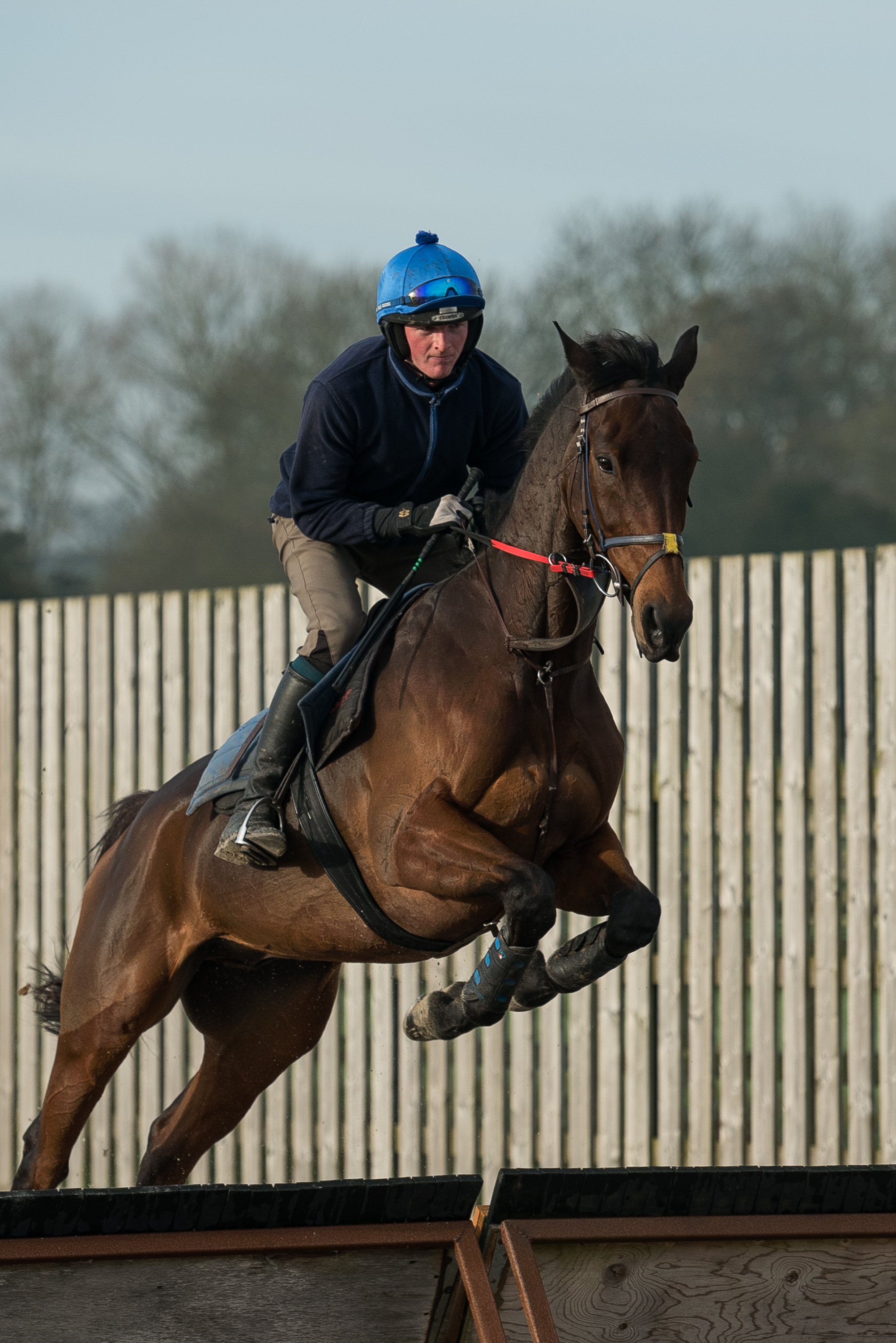
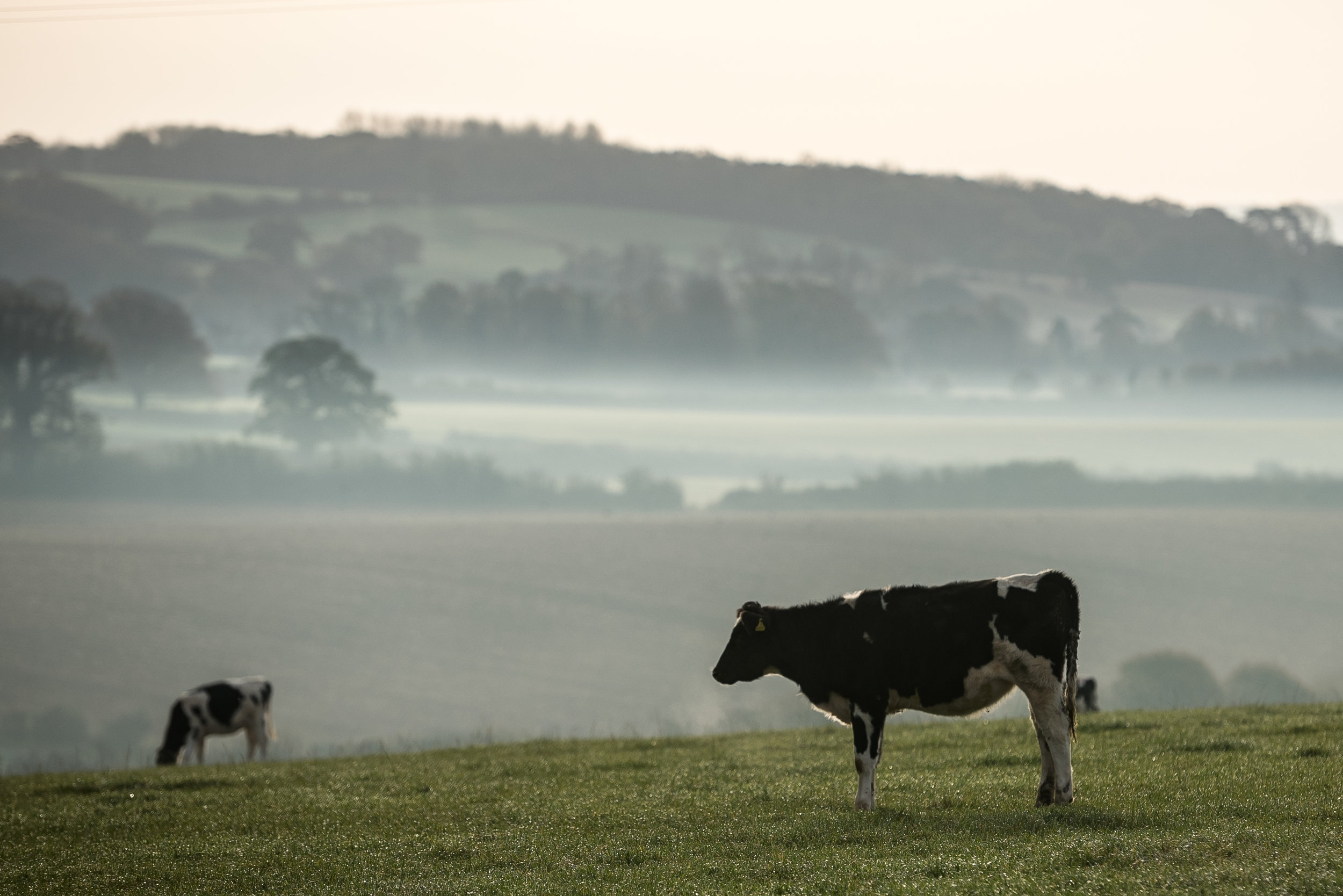
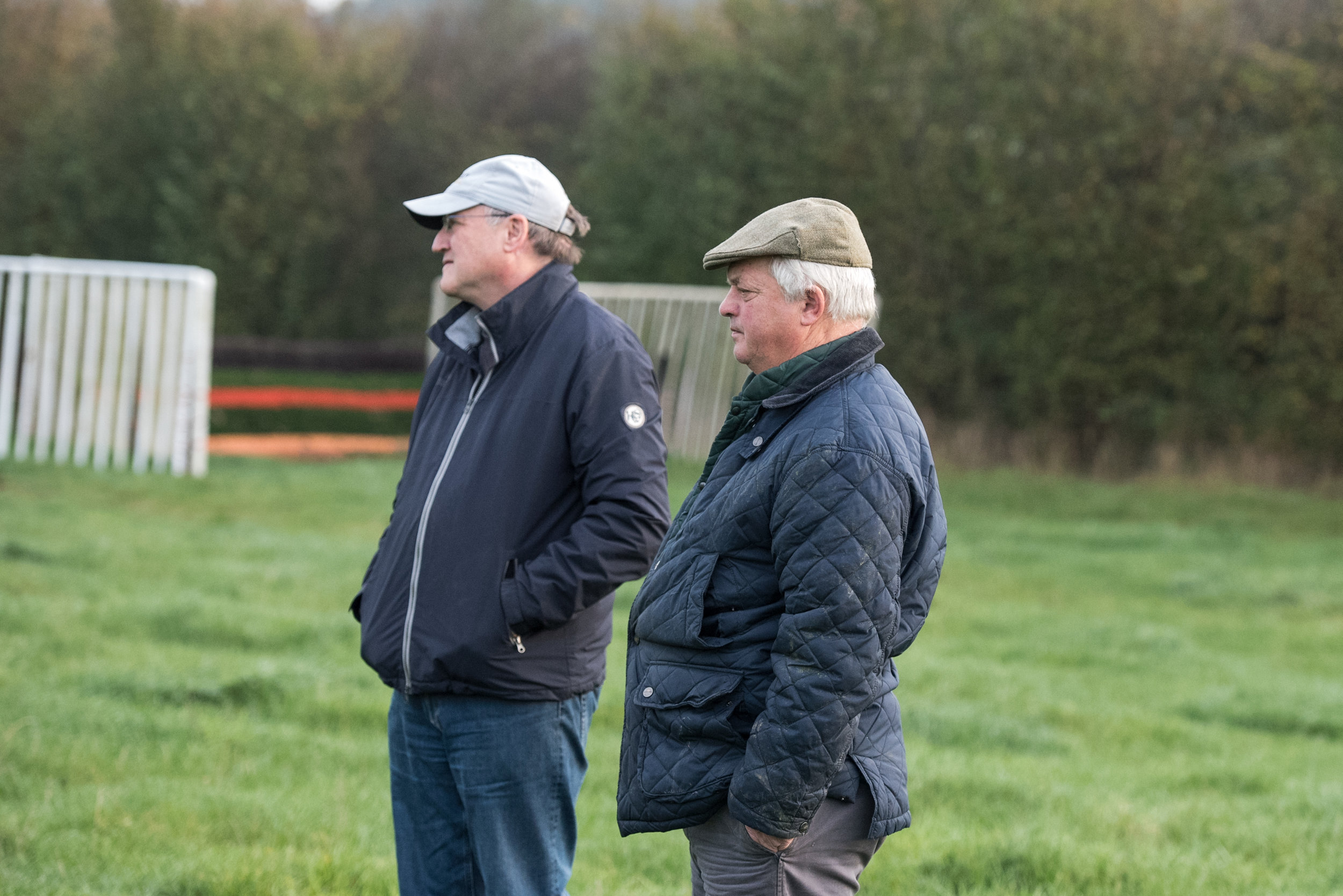
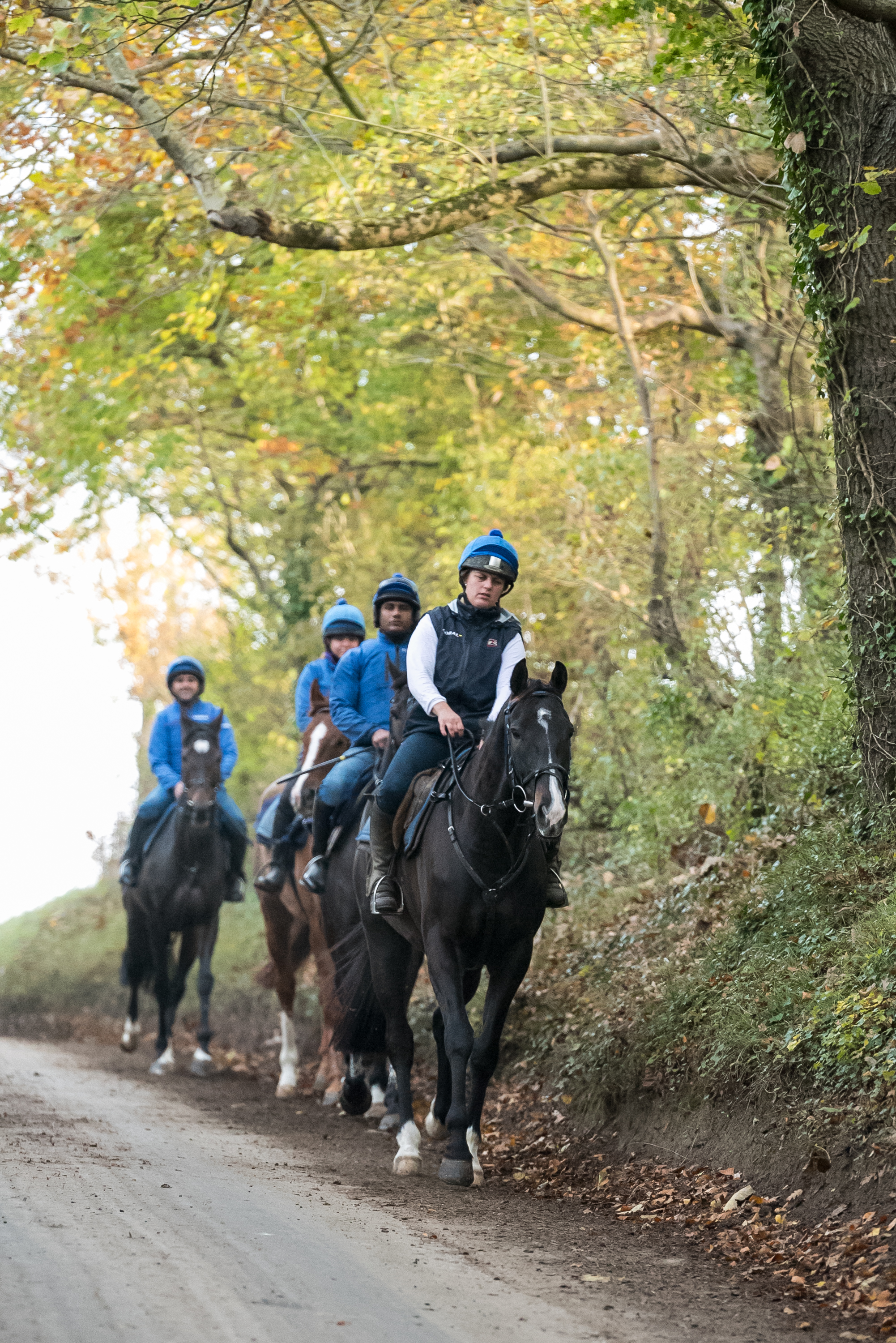
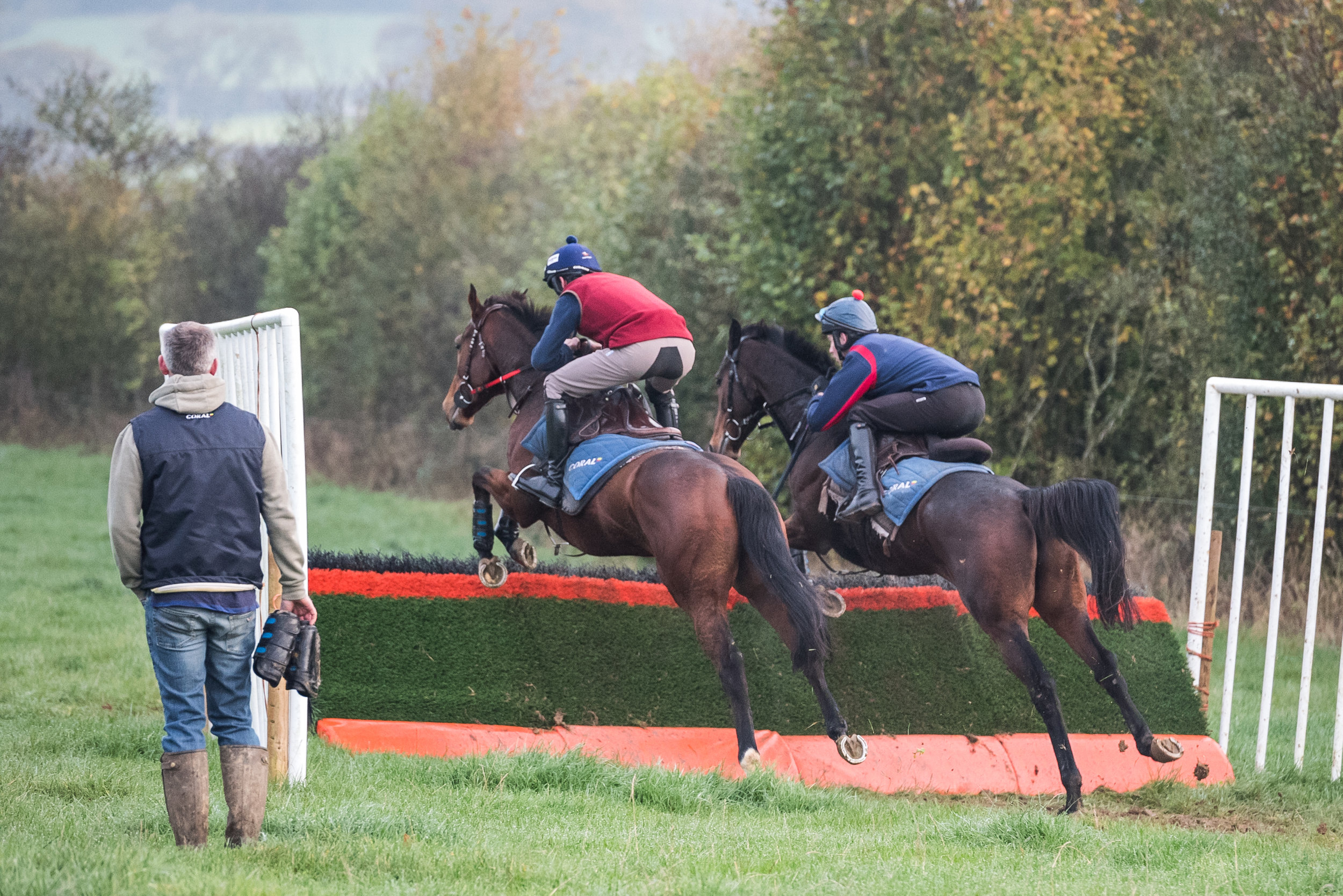
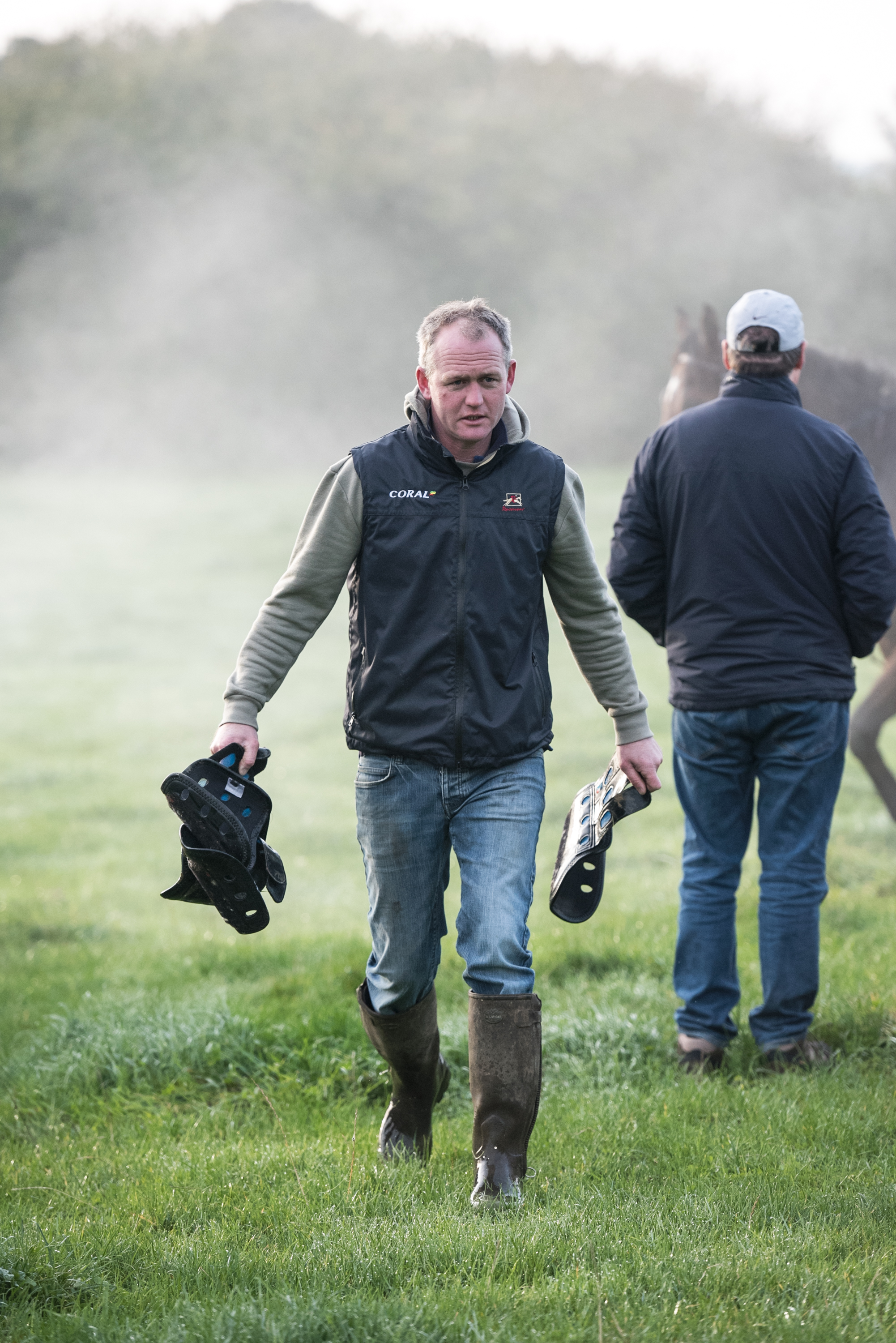


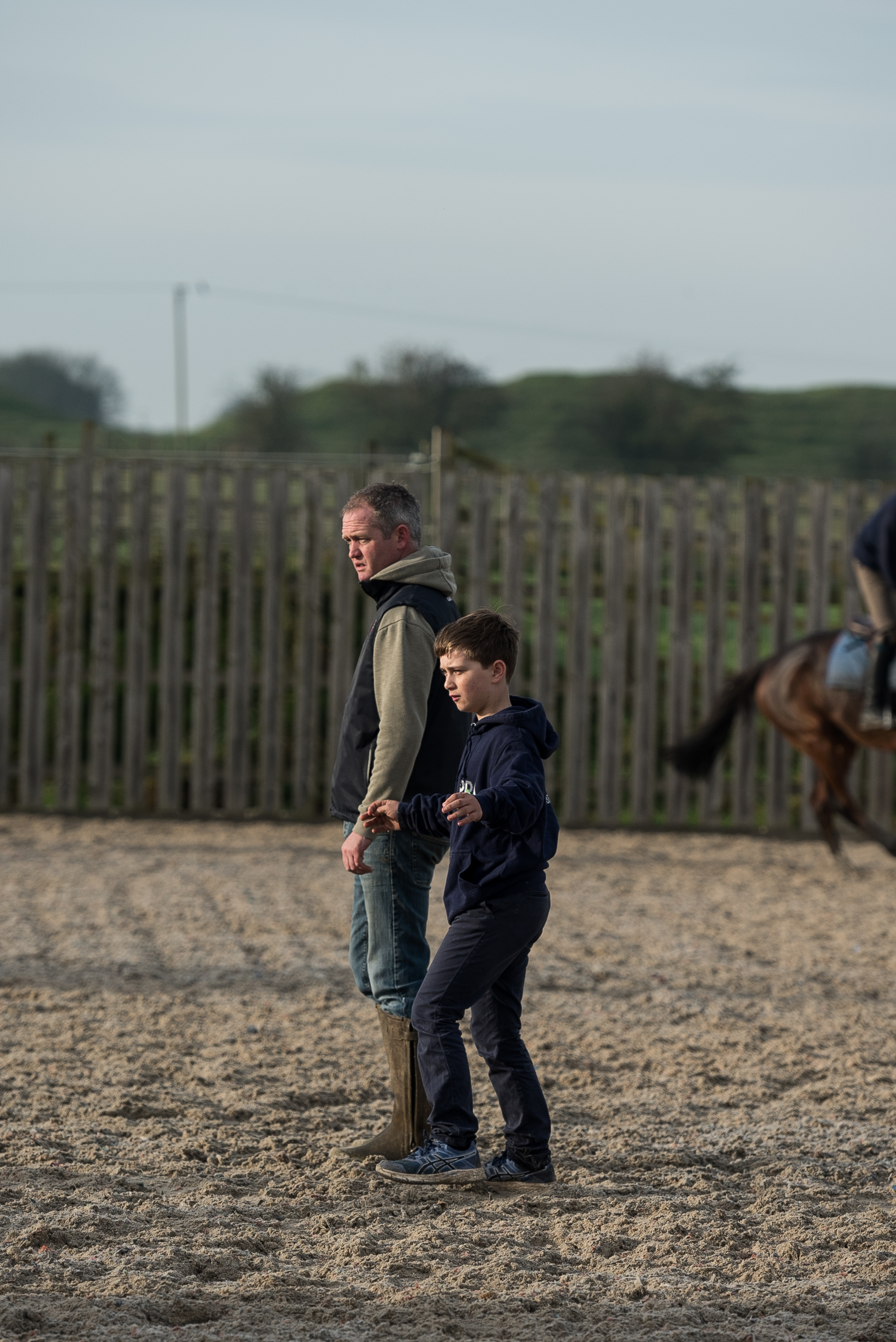
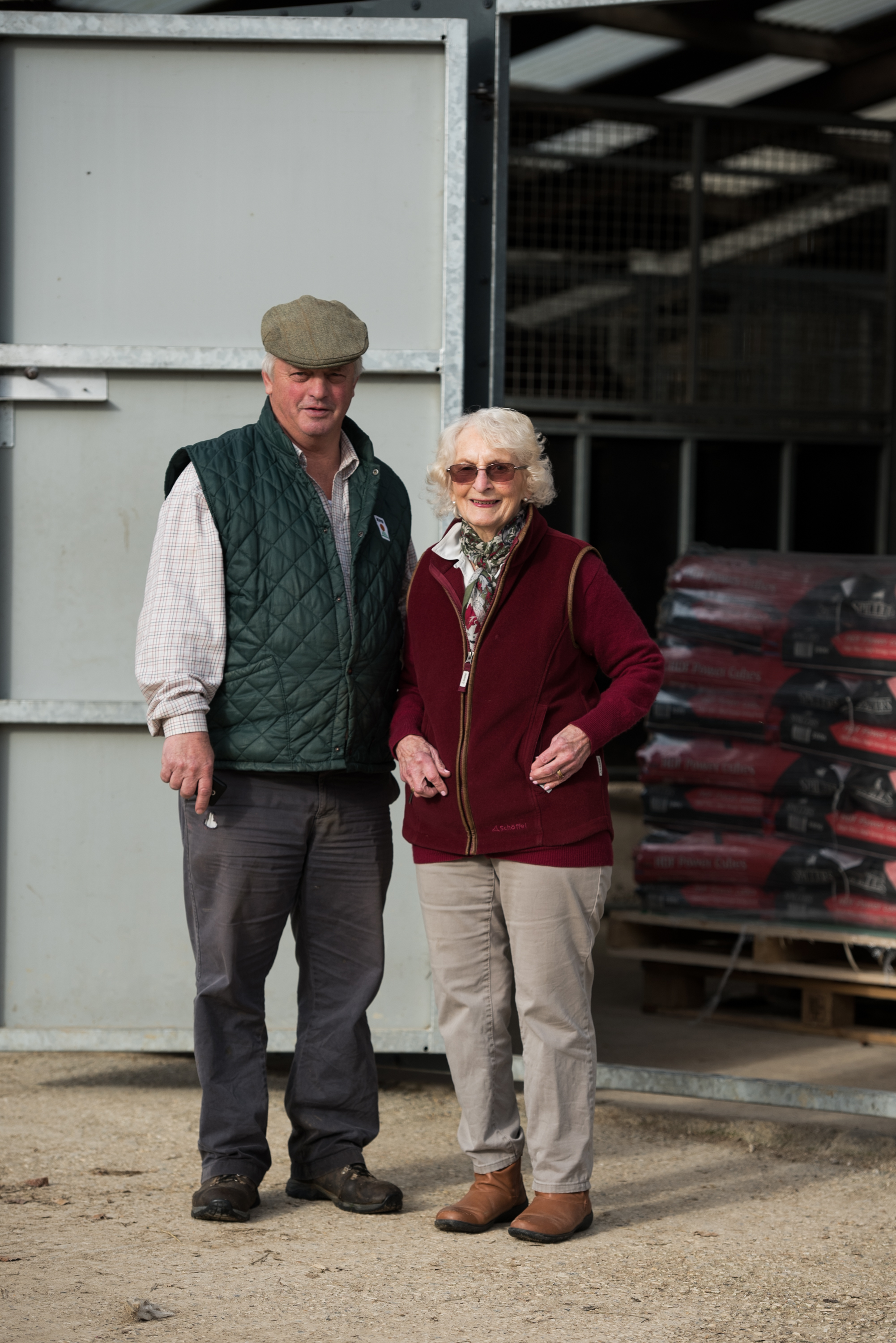
The Positive and Negative Effects of Oil in Equine Nutrition
Published in European Trainer, January - March 2018, issue 60.
Oil is a regular addition to modern racing diets, either by feeding a high oil-containing racing feed or through extra addition of liquid vegetable oil. Research over the years has shown that oil is palatable to horses and digested very well, and that there is little difference in digestibility between the main types of vegetable-based oils used.
Oil that is integral to feed ingredients, such as that found in rice bran, linseed, naked oats, soya, etc., may have a marginally lower digestibility, as this will depend on how digestible the encapsulating matrix is to the horse. However, in the main both free oil and integral oil is well tolerated and digested in horses.
In a natural environment, horses can easily consume between 2-3% of their body weight as dry matter from pasture. Oil has always been a natural part of the horse's diet, as grass contains about 2-3%, which may seem low but can provide the equivalent of 200-400mls of oil per day. Other forages, such as hay, haylage, and chaff, will also contain oil at a similar level on a dry matter basis.
Horses can tolerate up to 20-25% of their total energy intake coming from oil, and this has been exploited successfully....
To read more - subscribe now!
Buy this issue online here
Gallery
Back to School: Dressage as a Training Tool
Published in European Trainer, January - March 2018, issue 60.
To those not familiar with the idea, or indeed not familiar with the intricacies of managing the mind and body of the young thoroughbred, it might seem peculiar to take an animal bred for generations and engineered over centuries to display nothing short of super equine speeds, gargantuan leaps, and feats of middle-distance endurance, and to then turn it to the steadiest, most controlled, poised equestrian discipline. As mad a thing to do as this might seem at the end of such a horse’s career, to delve into it a day or so each week, or perhaps to go for an out-of-season dressage “staycation,” could seem just plain bizarre.
So why are we hearing more and more about the speedy souls that inhabit the world of horseracing sneaking out of the realms of the snaffle bit, flat saddle, jeans, and Cuban heel to indulge jodhpurs, curb chains, extremely high cantles, and Spanish topped-boots?
Well, it might not be as bizarre as it sounds. Three generations ago it was hard to find a trainer who hadn’t enjoyed some formal equitation training, most likely through the armed forces, but that was also an age where there was still some form of reliance upon the horse for anything as fundamental as travel, so there was simply a greater and more widespread understanding of the horse across the board. Many would have also known how to drive as well as ride simply from necessity. Later we will speak to one of the very few young trainers to have actively pursued driving, itself now a sport with an element of dressage.
Fewer and fewer trainers with each passing generation have a formal education in the fundamentals of classical riding, and it is perhaps only natural that in the face of such a decline there will be those that look to find an advantage in redressing this balance. Of course, there are always trainers who come to horseracing from more conventionally classical disciplines, many of them hugely successful regardless of code, country, or surface, and these exceptions prove as interesting as those who seek the help of specialist dressage instructors or riders to enhance the complex set of skills that have led to their success...
To read more - Buy this issue online here
Or Subscribe!
Gallery
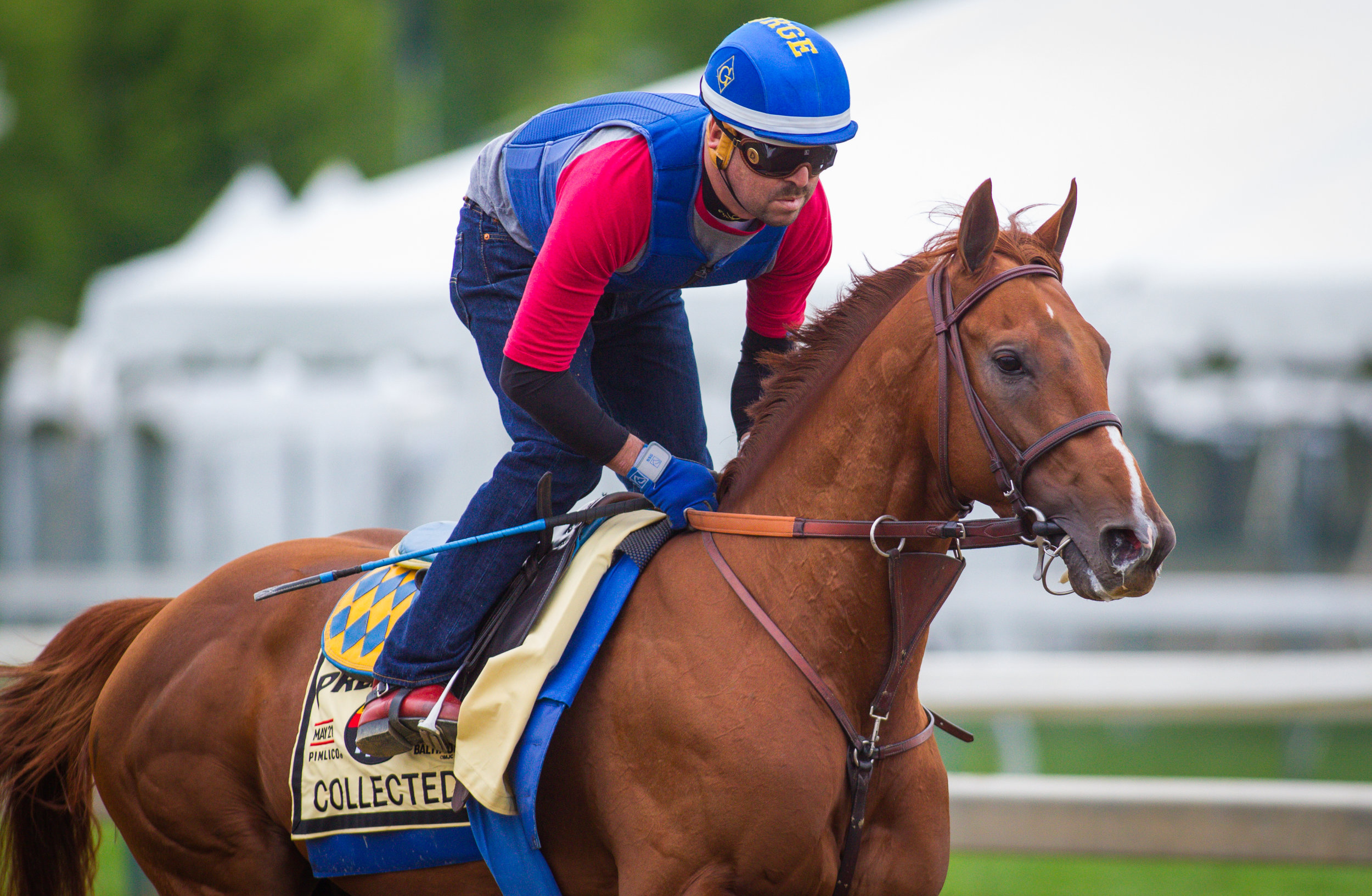
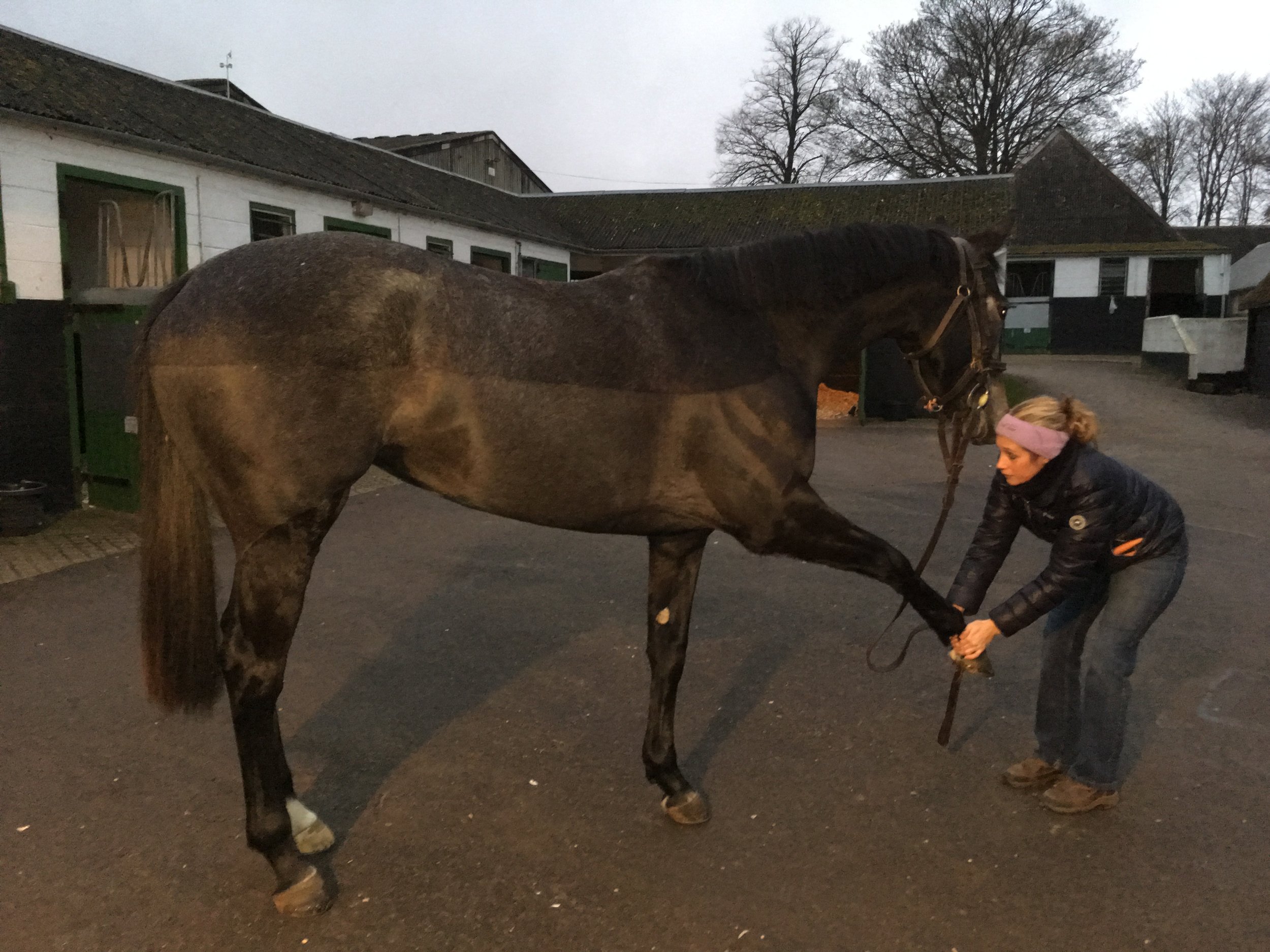
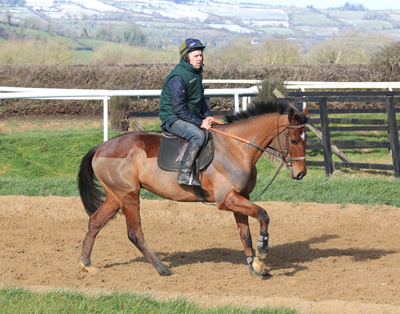
Horseracing in South Korea: A GLOBAL VISION
Published in European Trainer, January - March 2018, issue 60.
On the evening of 19th January 2017, something special happened in Dubai. To the casual spectator it might have seemed like any other horse race, but to viewers in Korea, the 1200m District One Handicap at Meydan was a watershed moment in their nation’s sporting history. Because the winner of this race was Main Stay, a four-year-old colt trained by Kim Young Kwan and the first Korean-trained horse to win at a significant international meeting since thoroughbred horse racing was established in South Korea almost 100 years ago. What is more, the winner carried the (KOR) suffix in the racecard, underlining the fact that the country is now capable of producing internationally competitive thoroughbreds.
Yet as Main Stay crossed the line on that fateful night, even switched-on racing enthusiasts and professionals with a broad international perspective may have asked, “So they race in Korea?”
Indeed, this otherwise significant nation’s racing industry remains relatively unknown across the globe. Recent developments have brought Korean racing into the spotlight however, and notable domestic and international expansion projects put in place by the Korea Racing Authority (KRA) could soon see it established as an influential player on the global racing scene....
To read more - subscribe now!
Buy this issue online here
Gallery coming...
Starting Up: Where in the EU can New Trainers Get the Best Start?
Published in European Trainer, January - March 2018, issue 60.
In the previous issue of European Trainer (Issue 59, October-December 2017), the Trainers’ Daily Rates Survey was summarised, while Europe’s best training centres were also featured. From the former we learned that only 38% of trainers derive their sole income from training, yet this doesn’t deter hopefuls from taking out their first licence. So, where is the best place to set up a new yard to tip the balance in your favour?
Just over half of European trainers keep between 10-50 horses; fewer than 10% have more, and it is generally not considered to be economically viable to train fewer than 30 horses. The average daily rate per horse charged by a trainer is €43, which would provide a weekly revenue of €9,030 for a 30-horse yard.
Comparing daily rate to staff wages, there is little benefit to be found in starting up in one country versus another. The EU minimum wage maintains a constant across the board although the stable staff associations of some countries, such as Ireland, do ensure that a higher rate is paid. Therefore, anywhere from 50-90% of the daily rate charged will go to staff. A shortage of good riders and experienced staff is currently being endured throughout Europe, so, again, a new trainer is free to choose any location...





